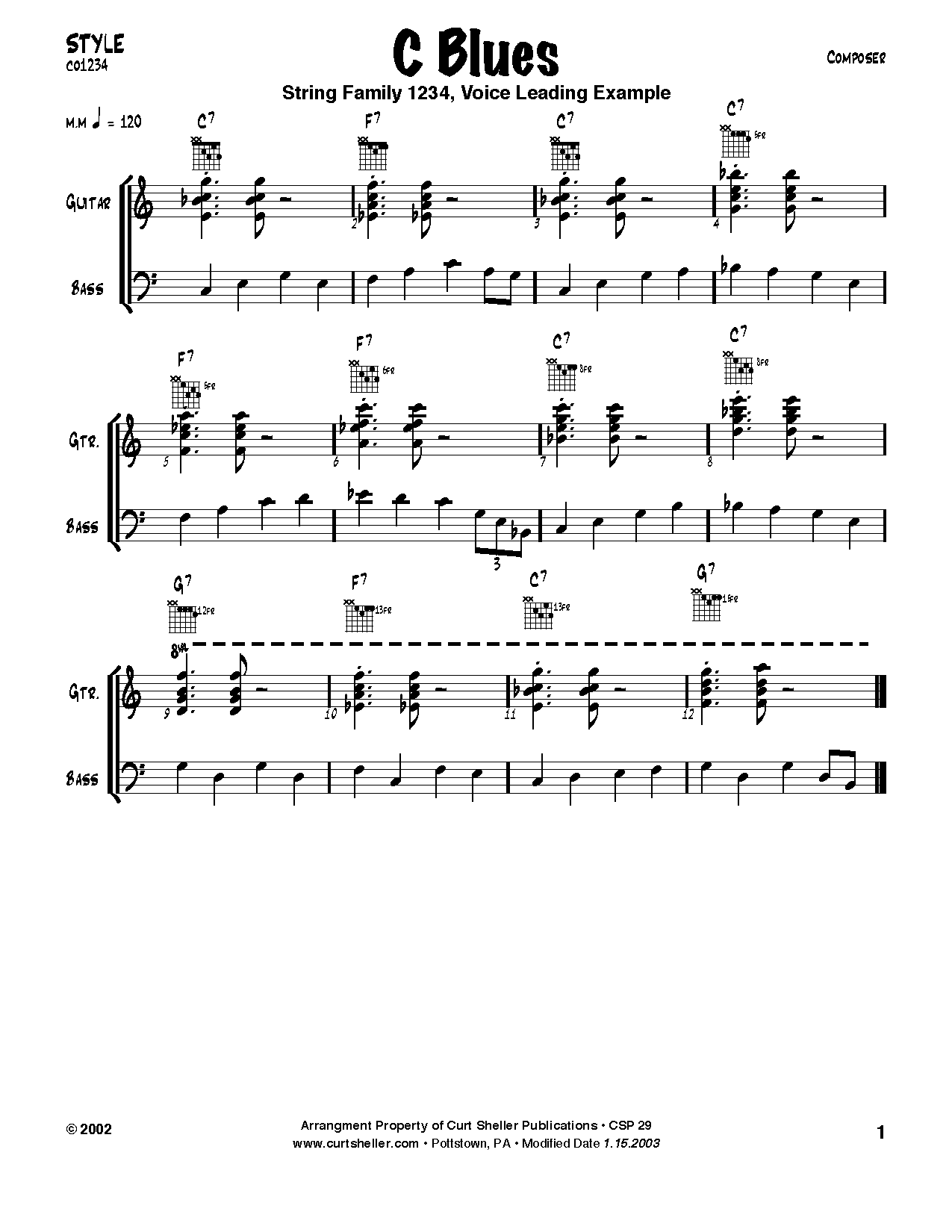
Using the blues progression will can explore all voicings on string family 1 2 3 4. Using Voice Leading principles we will explore all 4 voicings of a seventh chords. To goal here is to play a different voicing in each measure. By transposing the C7 voicings to F7 (up 5 frets) and G7 (up 2 frets from F7).
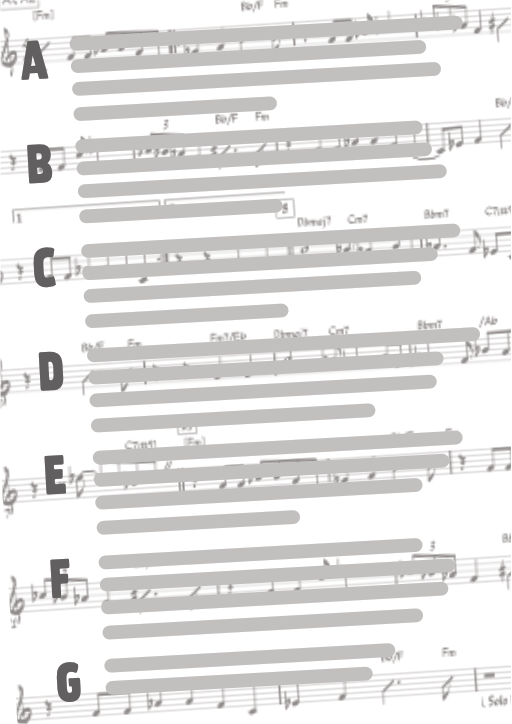
A glossary of common music terms. Common and not so common music terms. Knowing the language and terms used with music aides in your own understanding when exploring your music potential.
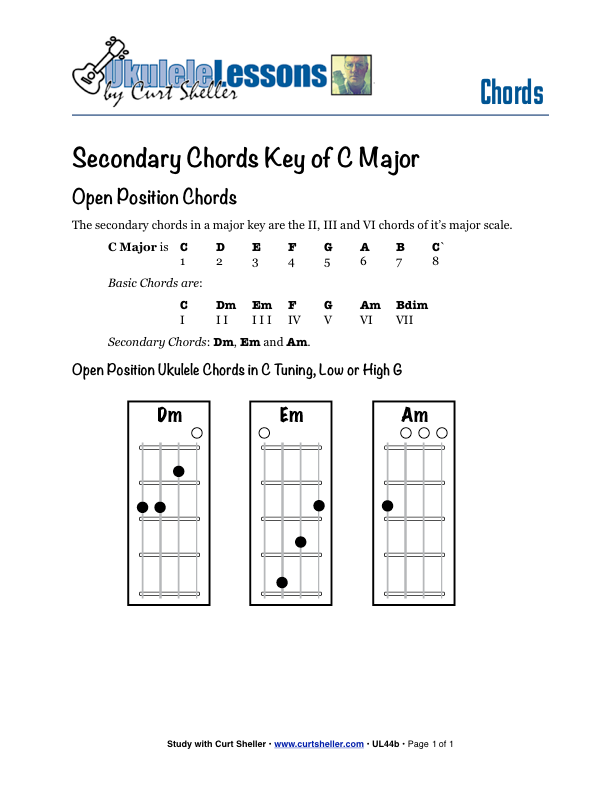
The secondary chords for any major key are the II, III and VI chords of it's corresponding major scale. For C Major, the secondary chords are: Dm, Em and Am. From the primary and secondary chords of a major key, countless songs and chords progressions can be played.

A triad is a three note chord. In traditional chord theory there are four triad chord types: major, minor, diminished and augmented. This lesson covers the major and minor triads on string 1 2 3.
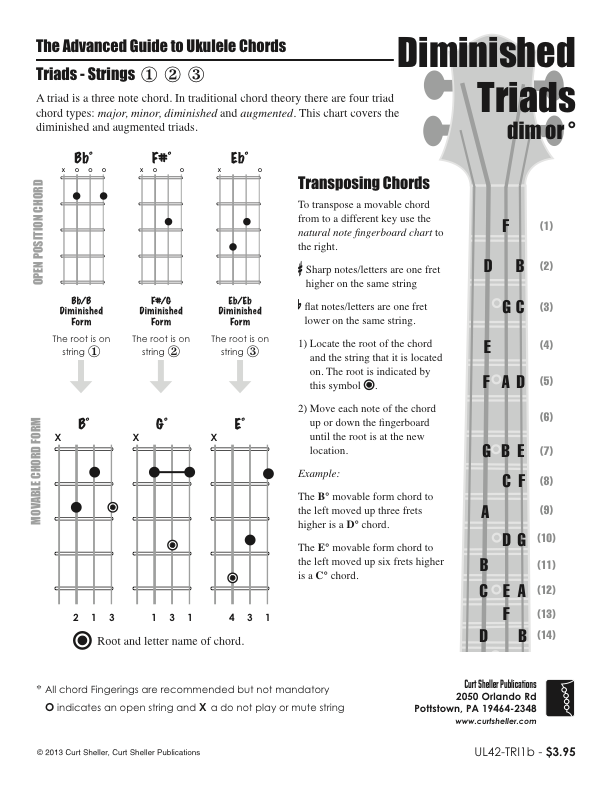
A triad is a three note chord. In traditional chord theory there are four triad chord types: major, minor, diminished and augmented. This lesson covers the augmented and diminished triads on strings 1 2 3.
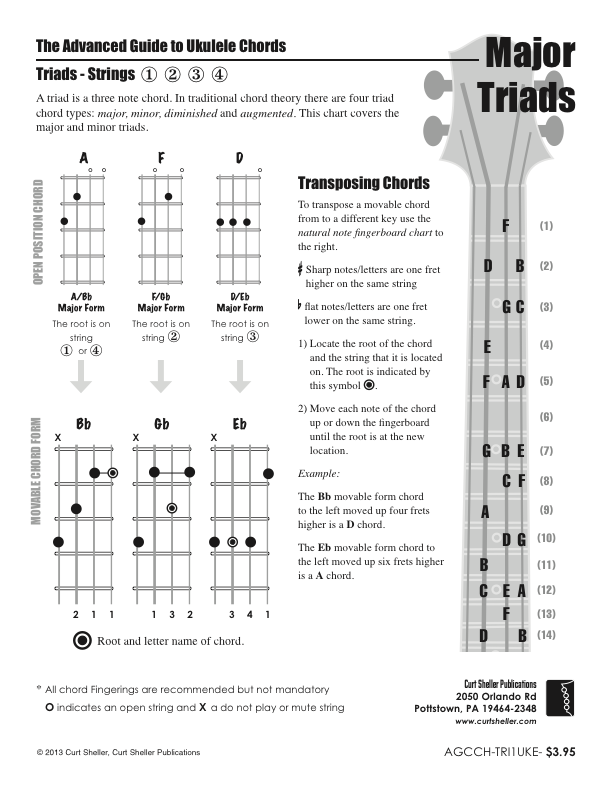
A triad is a three note chord. In traditional chord theory there are four triad chord types: major, minor, diminished and augmented. This chart covers the major and minor triads on strings 1 2 3 4.
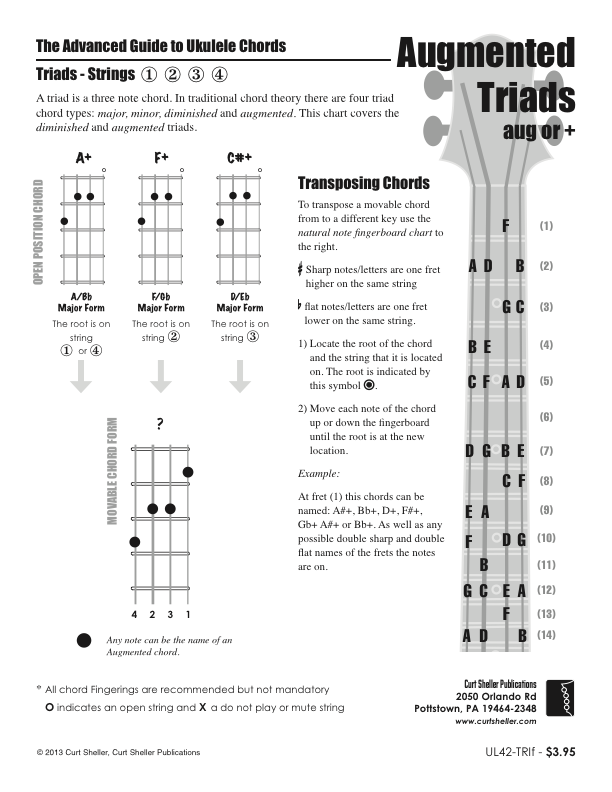
A triad is a three note chord. In traditional chord theory there are four triad chord types: major, minor, diminished and augmented. This lesson covers the augmented and diminished triads on strings 1 2 3 4.
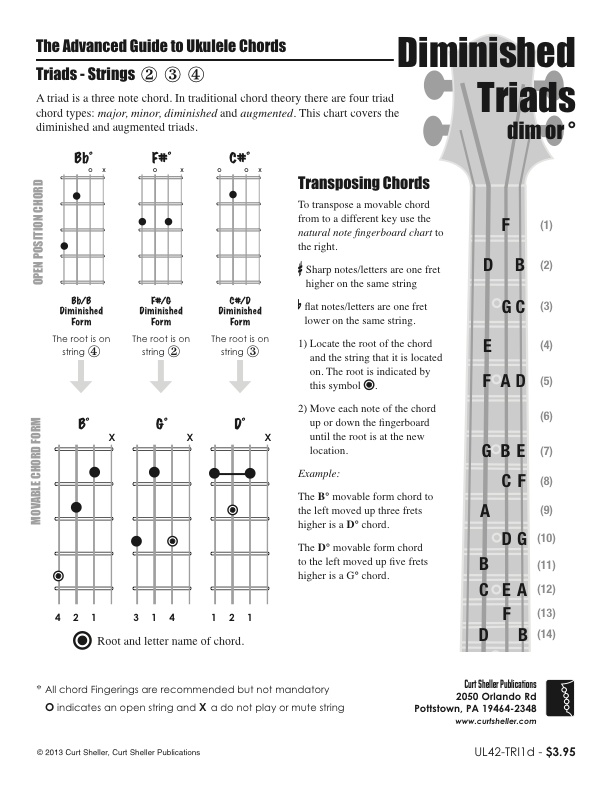
A triad is a three note chord. In traditional chord theory there are four triad chord types: major, minor, diminished and augmented. This lesson covers the augmented and diminished triads on strings 2 3 4.
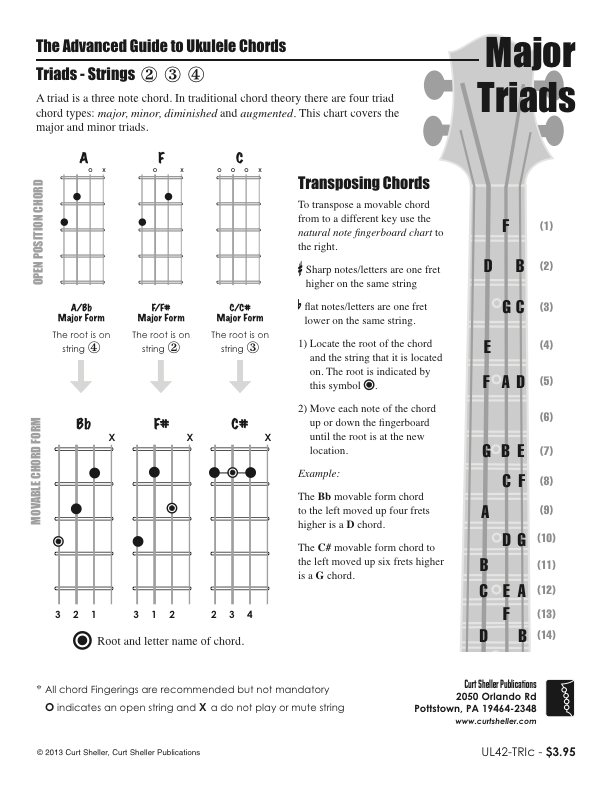
A triad is a three note chord. In traditional chord theory there are four triad chord types: major, minor, diminished and augmented. This chart covers the major and minor triads on strings 2 3 4.
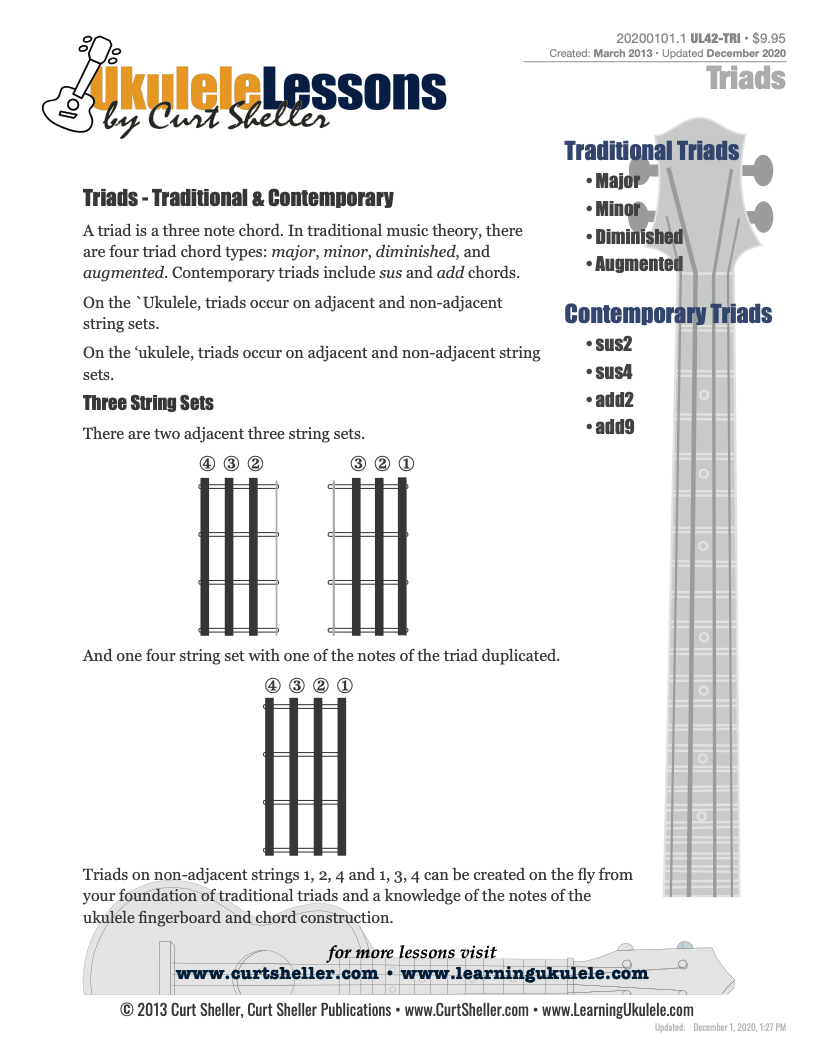
A "Triad" is a three note chord. In traditional music theory, there are four triad chord types: major, minor, diminished, and augmented. Contemporary triads include sus and add.
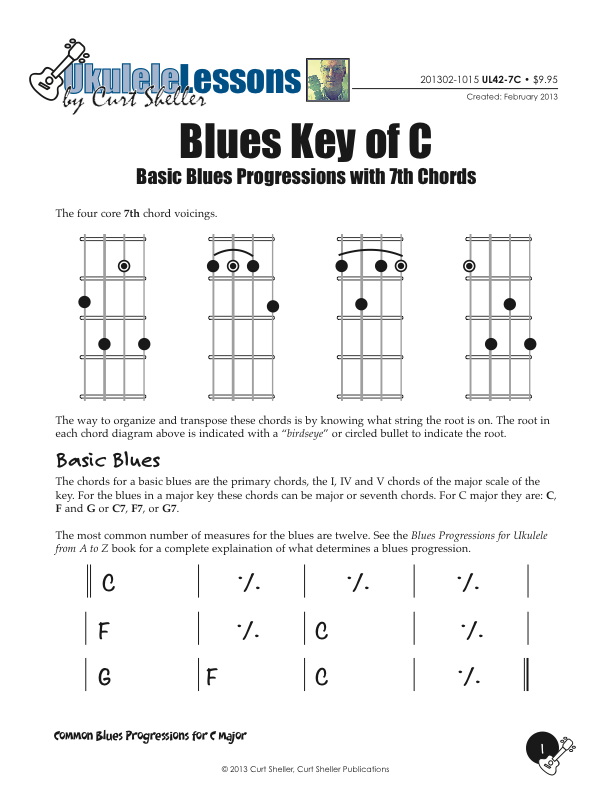
Basic and Quick Change blues chord progressions in the key of C major using the core 7th chords from the Big Six series of lessons. This is a great way to explore this core chord in various keys. These are the two most common blues progressions used in traditional and contemporary music.
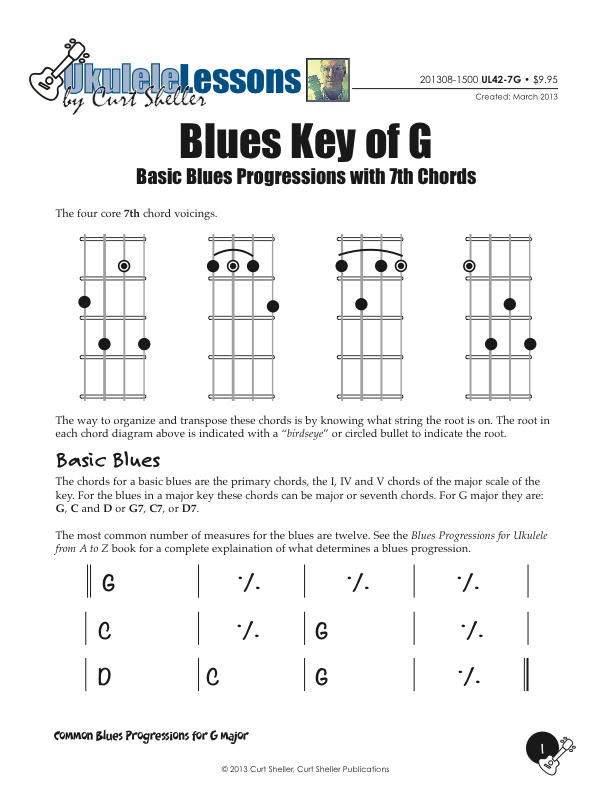
Basic and Quick Change blues chord progressions in the key of G major using the core 7th chords from the Big Six series of lessons. This is great way to explore this core chord in various keys. These are the two most common blues progressions used in traditional and contemporary music.
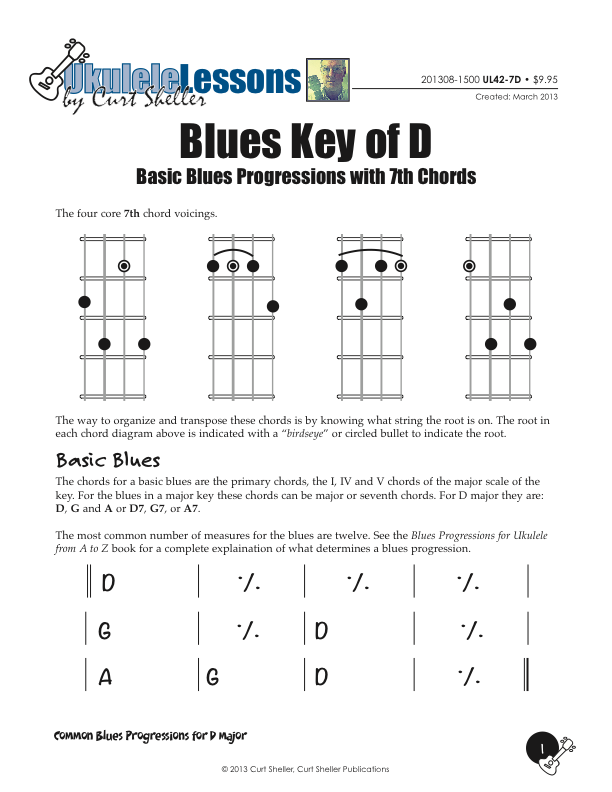
Basic and Quick Change blues chord progressions in the key of D major using the core 7th chords from the Big Six series of lessons. This is great way to explore this core chord in various keys.

Basic and Quick Change blues chord progressions in the key of A major using the core 7th chords from the Big Six series of lessons. This is great way to explore this core chord in various keys.
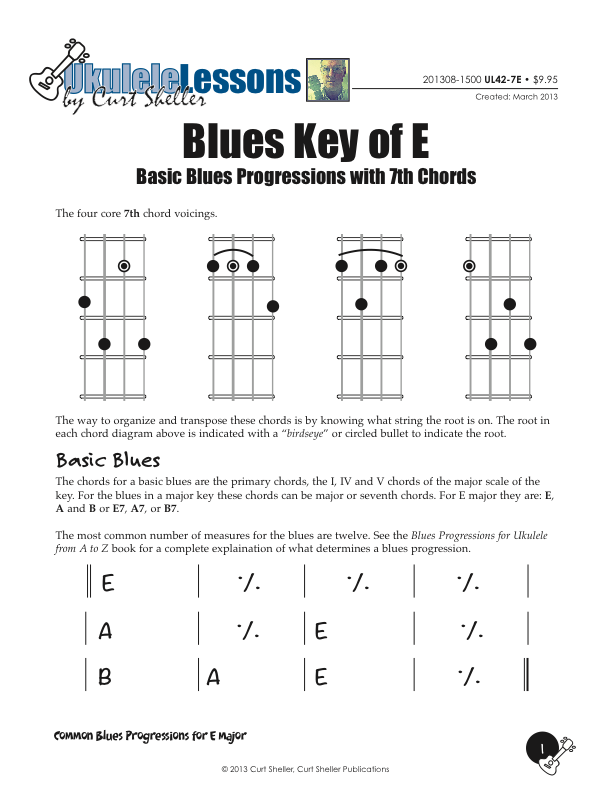
Basic and Quick Change blues chord progressions in the key of E major using the core 7th chords from the Big Six series of lessons. This is great way to explore this core chord in various keys.
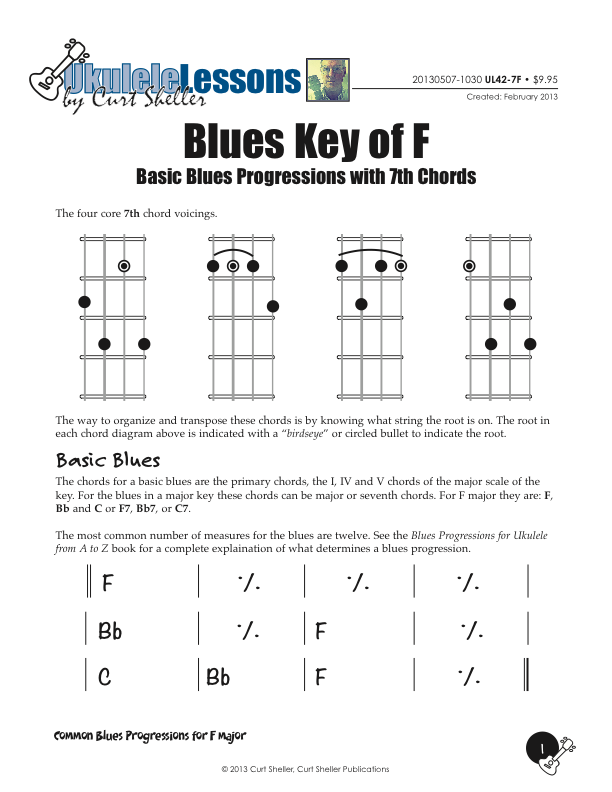
Basic and Quick Change blues chord progressions in the key of F major using the core 7th chords from the Big Six series of lessons. This is great way to explore this core chord in various keys.
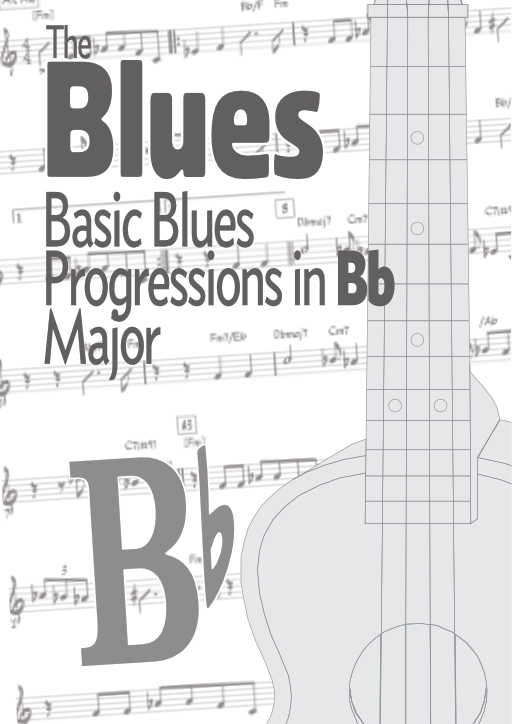
Basic and Quick Change blues chord progressions in the key of Bb major using the core 7th chords from the Big Six series of lessons. This is great way to explore this core chord in various keys.
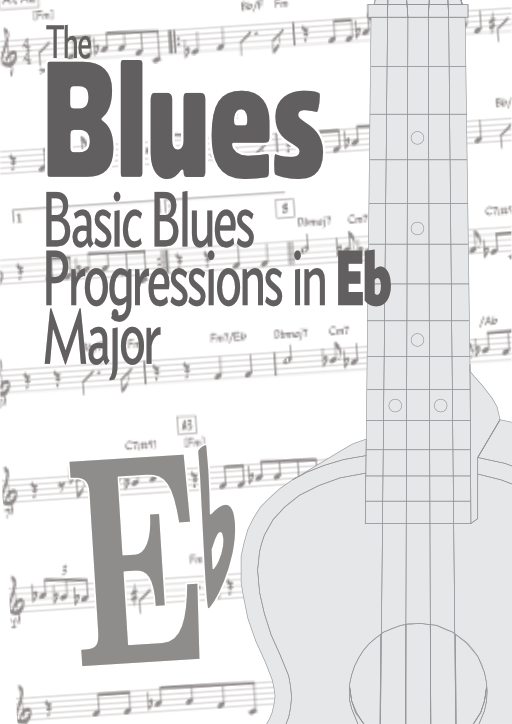
Basic and Quick Change blues chord progressions in the key of Eb major using the core 7th chords from the Big Six series of lessons. This is great way to explore this core chord in various keys.

Basic and Quick Change blues chord progressions in the key of Ab major using the core 7th chords from the Big Six series of lessons. This is great way to explore this core chord in various keys.
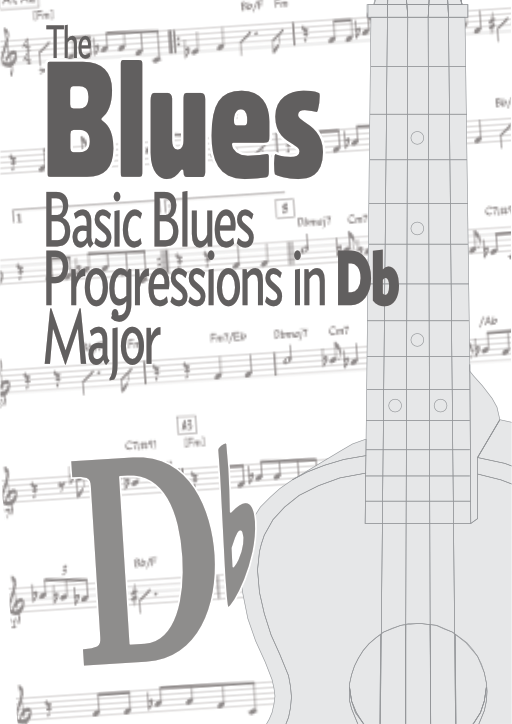
Basic and Quick Change blues chord progressions in the key of Db major using the core 7th chords from the Big Six series of lessons. This is great way to explore this core chord in various keys
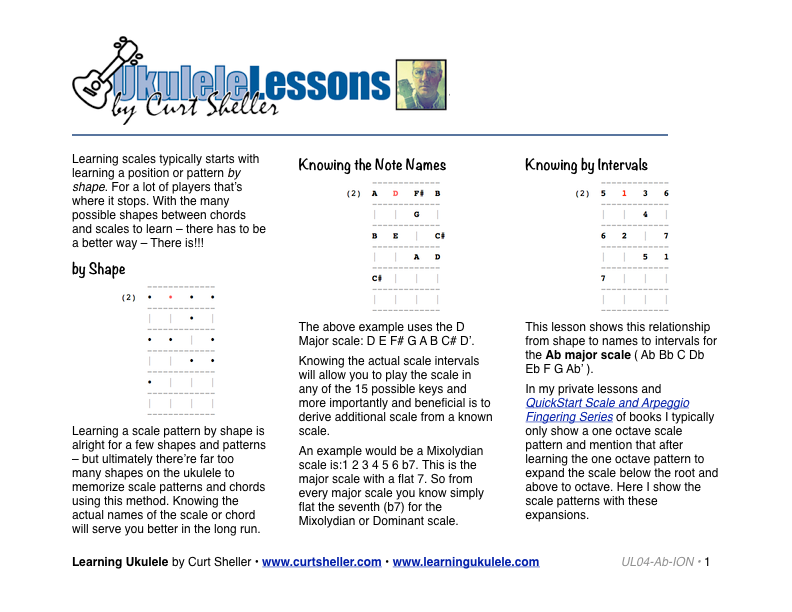
Essential Ab Major scale patterns for ukulele. Learning scales typically starts with learning a position or pattern by shape. For a lot of players that's where it stops. With the many possible shapes between chords and scales to learn - there has to be a better way - There is!!!
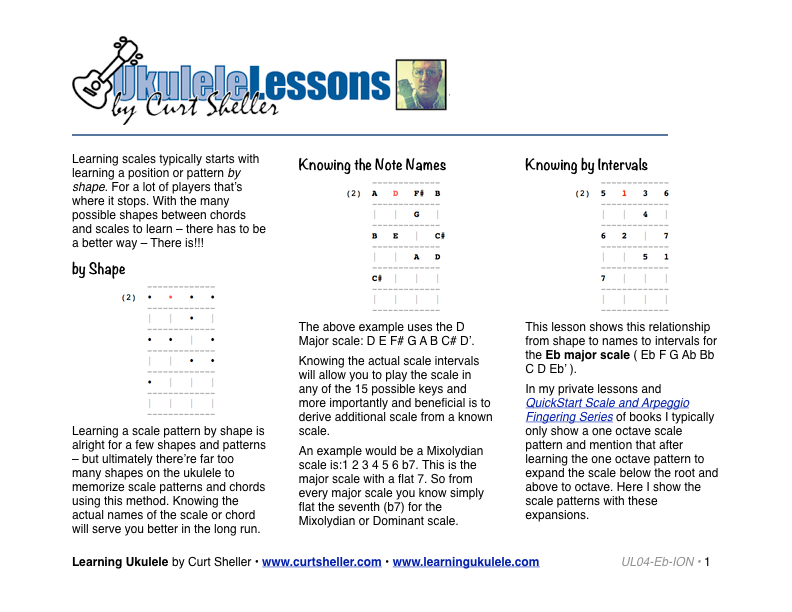
Essential Eb Major scale patterns for ukulele. Learning scales typically starts with learning a position or pattern by shape. For a lot of players that's where it stops. With the many possible shapes between chords and scales to learn - there has to be a better way - There is!!!
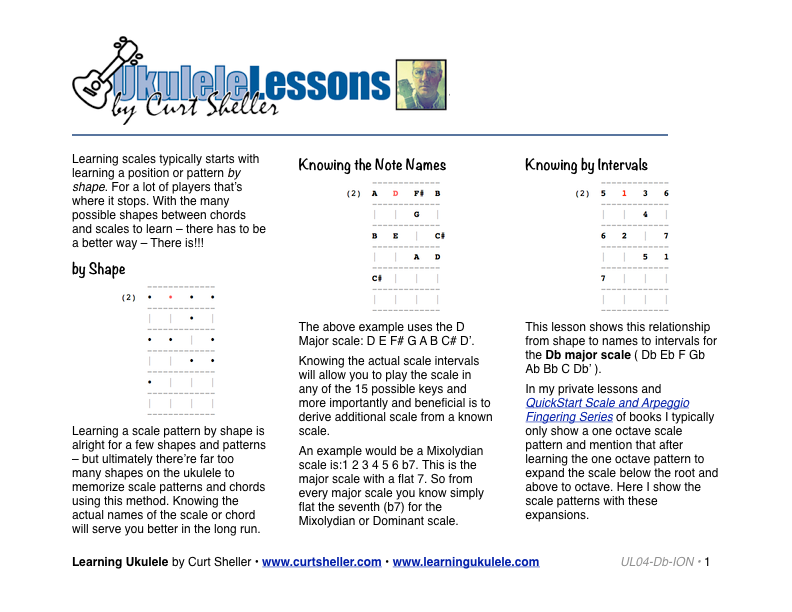
Essential DbMajor scale patterns for ukulele. Learning scales typically starts with learning a position or pattern by shape. For a lot of players that's where it stops. With the many possible shapes between chords and scales to learn – there has to be a better way – There is!!!
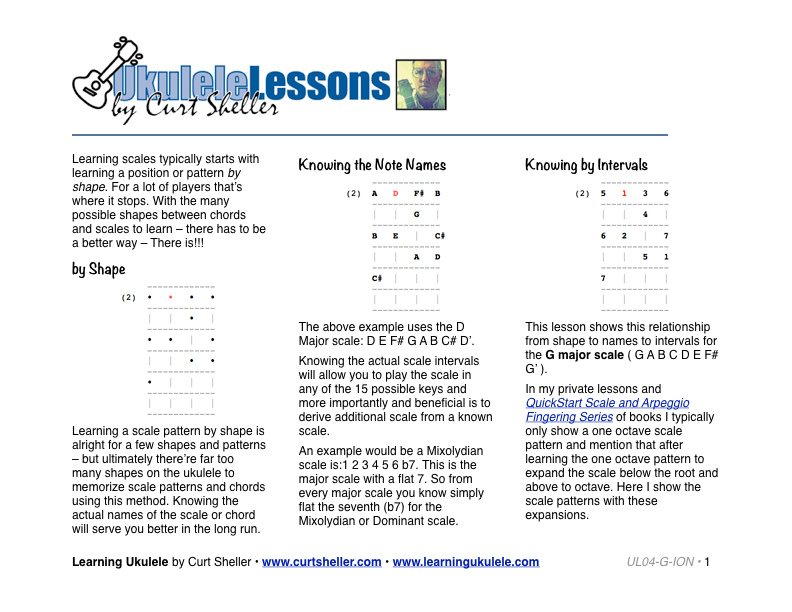
Essential G Major scale patterns for ukulele. Learning scales typically starts with learning a position or pattern by shape. For a lot of players that's where it stops. With the many possible shapes between chords and scales to learn - there has to be a better way - There is!!!

Exploring major triads using the primary chords of G major. Triads are one of the first chords that really bring to light the need to know the notes of the neck. This lesson shows the three voicings and the solutions for playing a common 1 4 1 5 progression using G, C and D triads on the string 1 2 3 set.
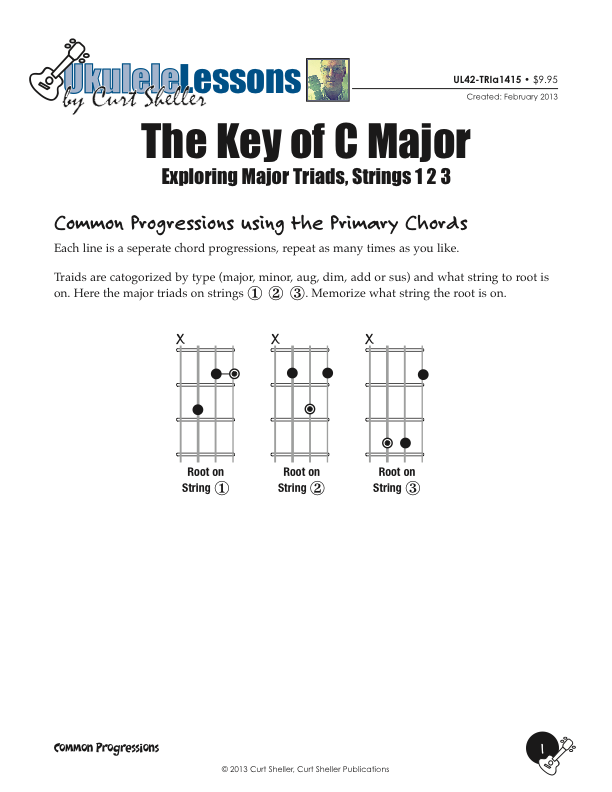
Building major triads using the primary chords of C major. Triads are one of the first chords that really bring to light the need to know the notes of the neck. This lesson shows the three voicings and the solutions for playing a common "1 4 1 5" progression using C, F and G triads on the string 1 2 3 set.
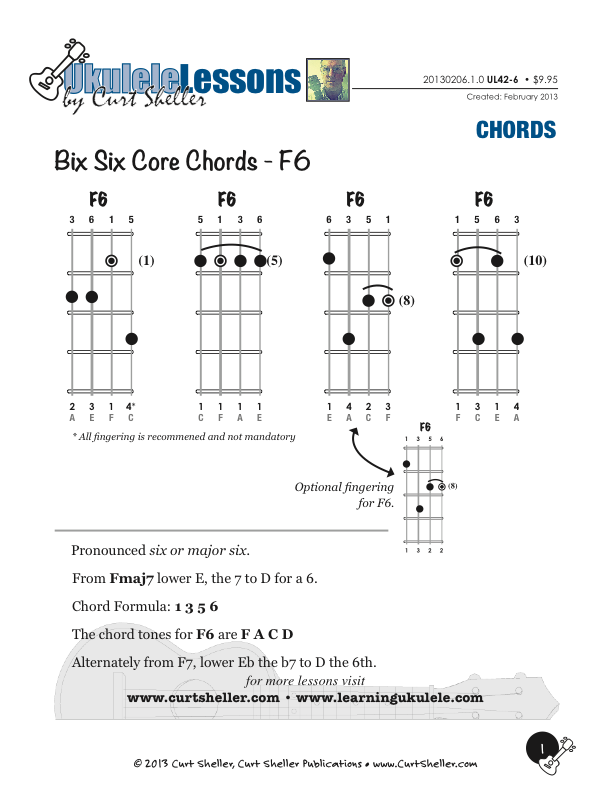
The Big Six Core Chords: "F6". This is the Level II of your core 4-part "Jazz" chords. The F6 is a 1 3 5 6 of the major scale, based on the root of the chord. A major 6th chord can be derived either from a seventh or major seventh chord. From a seventh chord lower the flat seventh one fret. From a major seventh chord lower the natural seventh two frets.
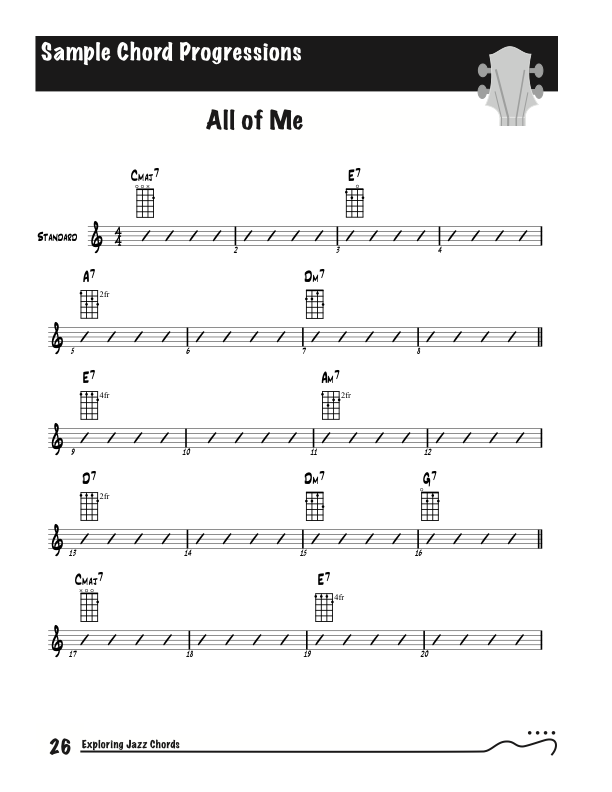
Using the jazz standard "All of Me" to explore jazz chords on ukulele.

Using the jazz standard "All of Me" to explore jazz chords on ukulele.
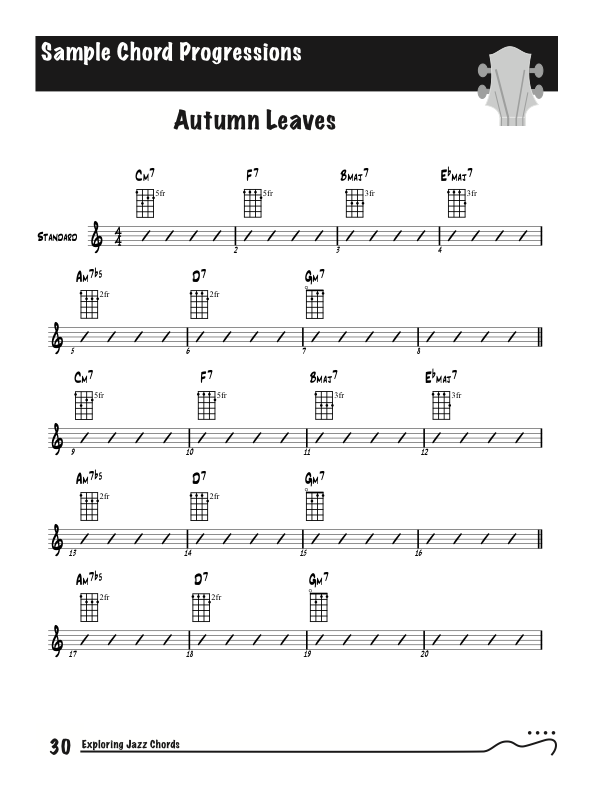
Using the jazz standard "Autumn Leaves" to explore jazz chords on ukulele.
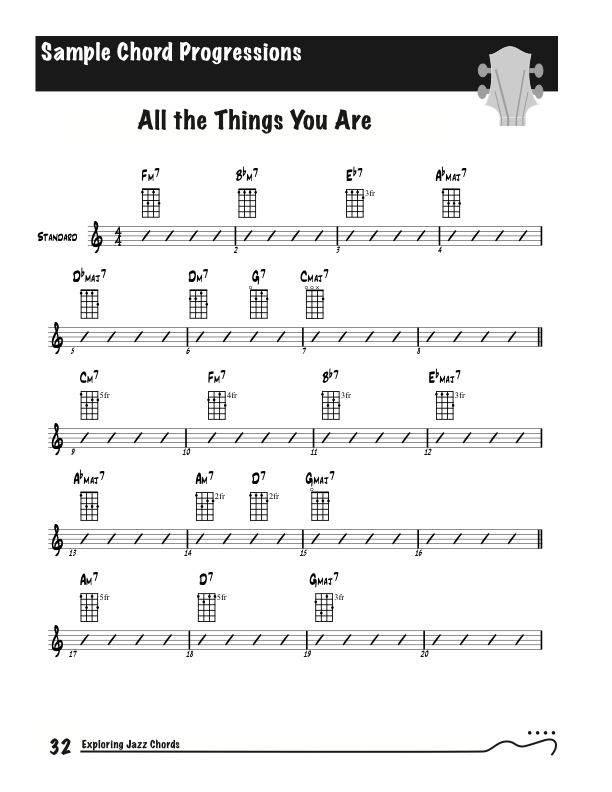
Using the jazz standard "All the Things You Are" to explore jazz chords on ukulele.

Using the jazz standard "The Days of Wine and Roses" to explore jazz chords on ukulele.

Using the jazz standard "There Will Never Be Another You" to explore jazz chords on ukulele.

Using the jazz standard "Back Home in Indiana" to explore jazz chords on ukulele.
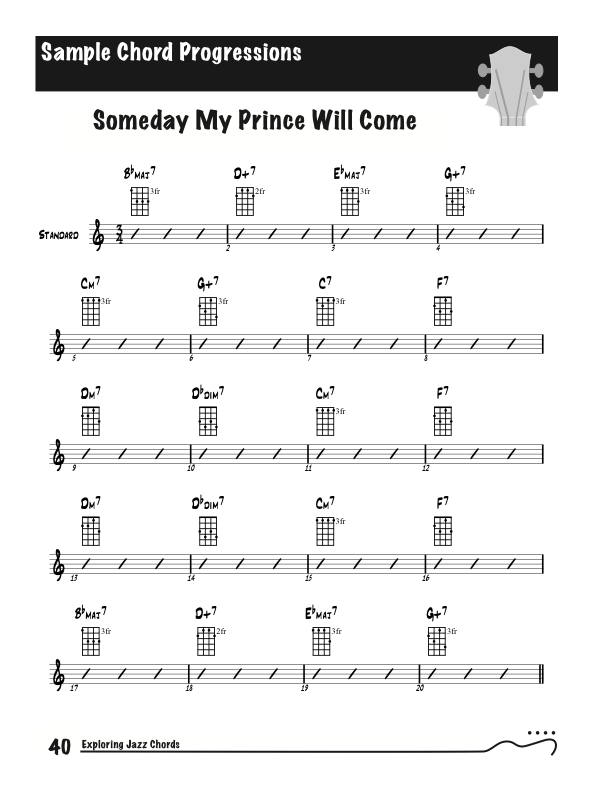
Using the jazz standard "Someday My Prince Will Come" to explore jazz chords on ukulele.
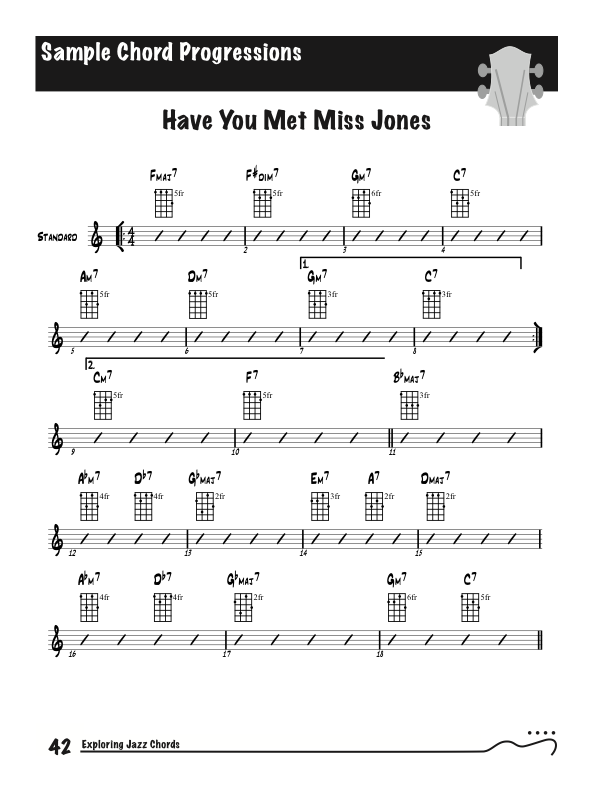
Using the jazz standard "Have You Met Miss Jones" to explore jazz chords on ukulele.
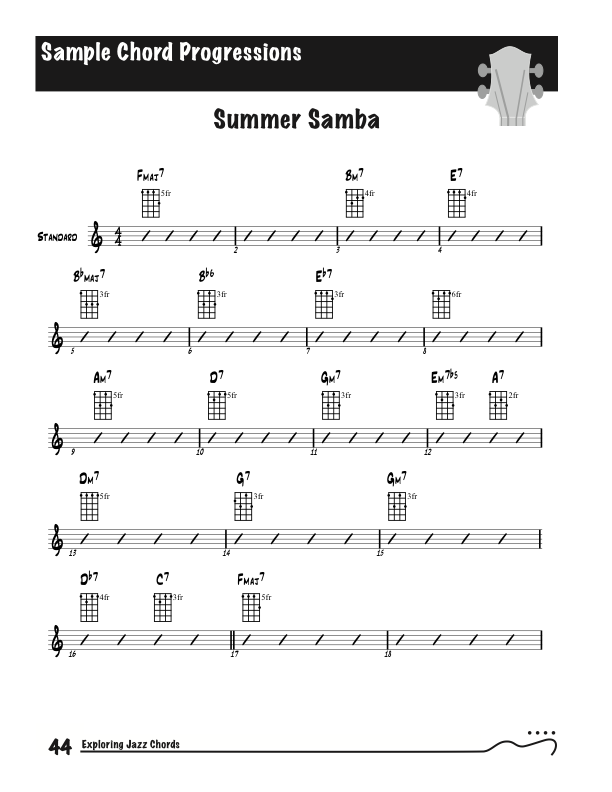
Using the jazz standard "Summer Samba" to explore jazz chords on ukulele.
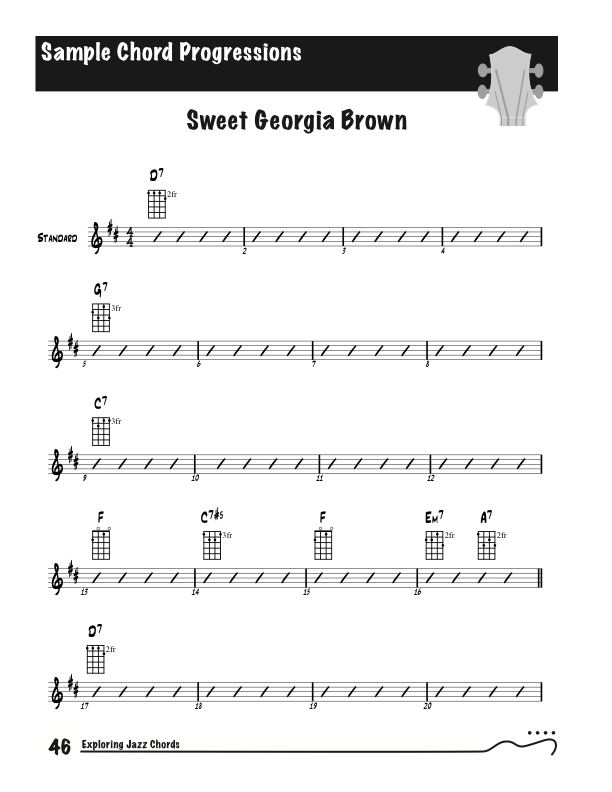
Using the jazz standard "Sweet Georgia Brown" to explore jazz chords on ukulele.

A variation of the previous lessons using the jazz standard "Sweet Georgia Brown" to explore jazz chords on ukulele.
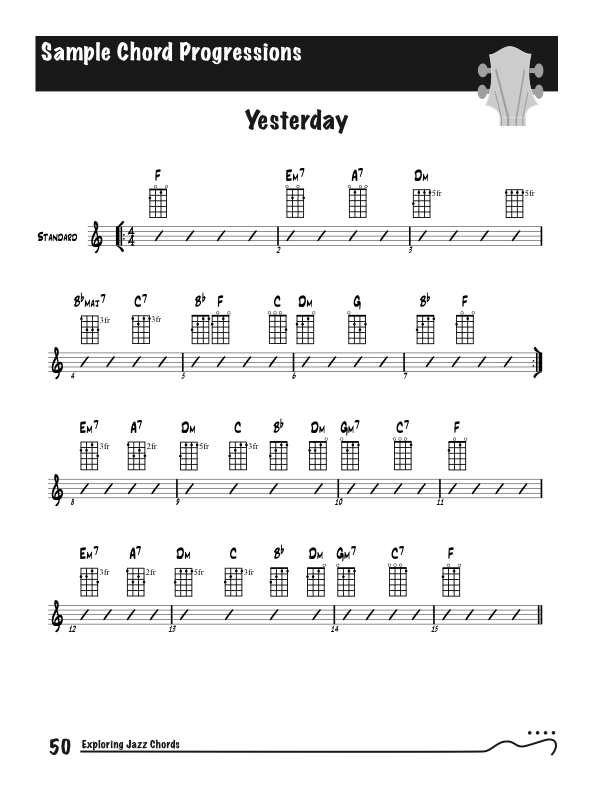
Using the classic Beatles cone by Paul McCartney "Yesterday" to explore jazz chords on ukulele.

Using the jazz standard "It's Only a Paper Moon" to explore jazz chords on ukulele.
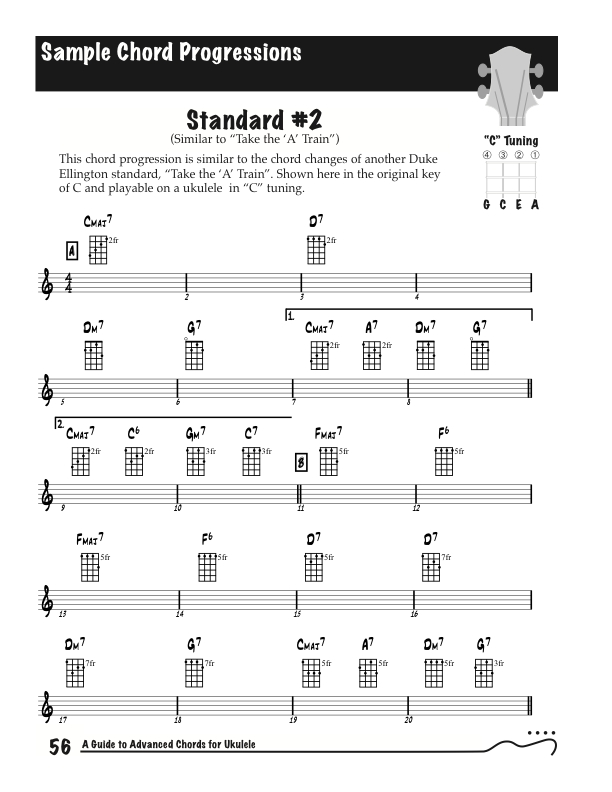
Using the jazz standard "Take the A Train" to explore jazz chords on ukulele.

Using the jazz standard "Satin Doll" to explore jazz chords on ukulele. This also a great song for an introduction and exploring the very common, "II V" harmonic cell.
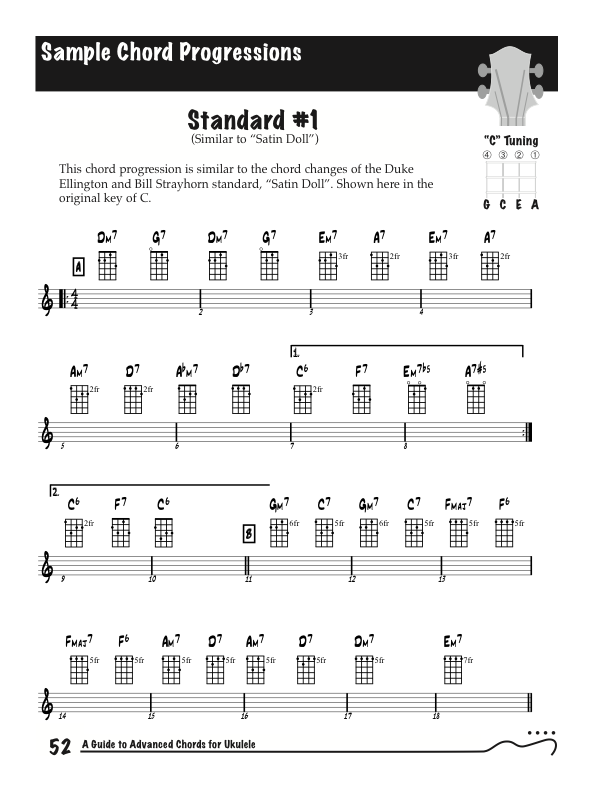
A variation using the jazz standard Satin Doll to explore jazz chords on ukulele.
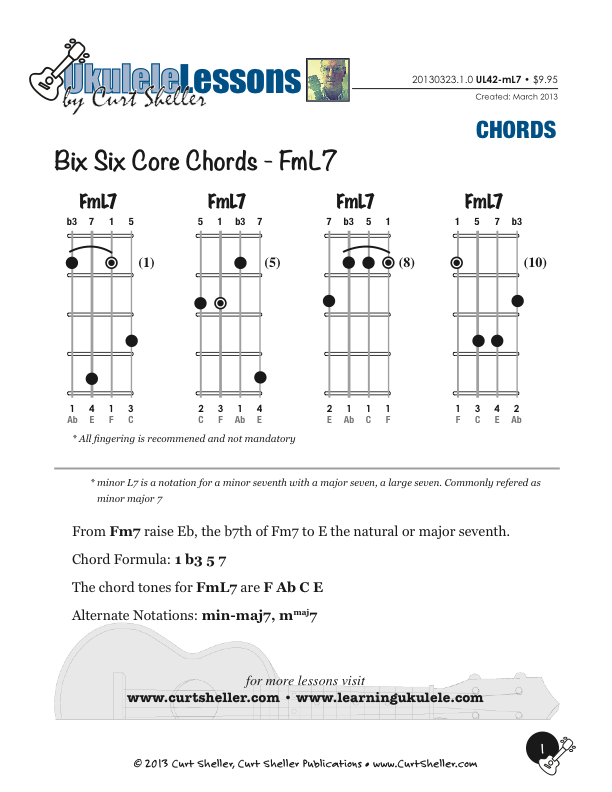
The Big Six Core Chords - Level II: "FmL7" is created from the "1 b3 5 7" of the major scale, based on the root of the chord. For "FmL7" the chord tones are: F Ab C E. The L is a contemporary chord designation and refers to a large seventh, a major seventh.

The Big Six Core Chords: "Fm6". This is the Level II of your core 4-part "Jazz" chords. The Fm6 is a 1 b3 5 6 of the major scale, based on the root of the chord. A minor 6th chord can be derived either from a minor seventh or major sixth chord. From a minor seventh chord lower the flat seventh one fret. From a major sixth chord lower the natural third one fret.
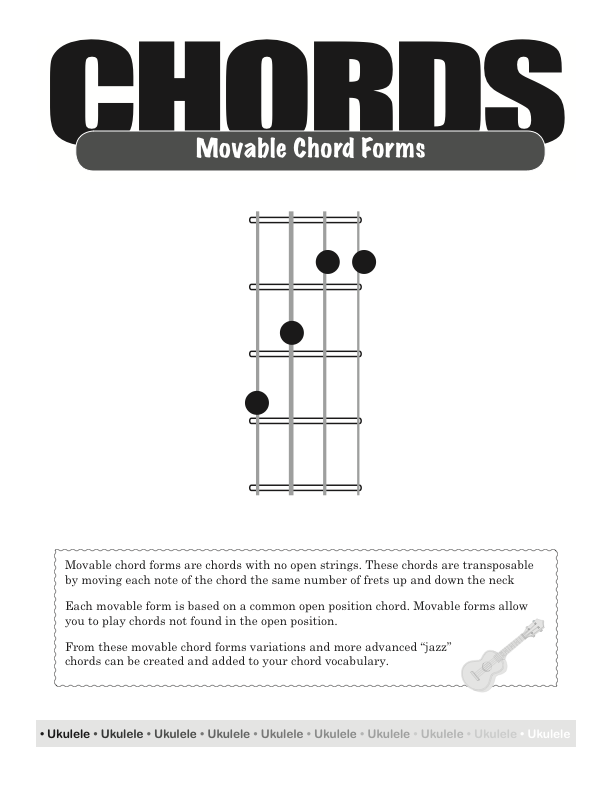
The "A/Bb Movable Form Ukulele Chords", based on the open position "A, Am, and A7" chords allow you to transpose these to any key. The movable form chords are the next step after learning the core open position chords.
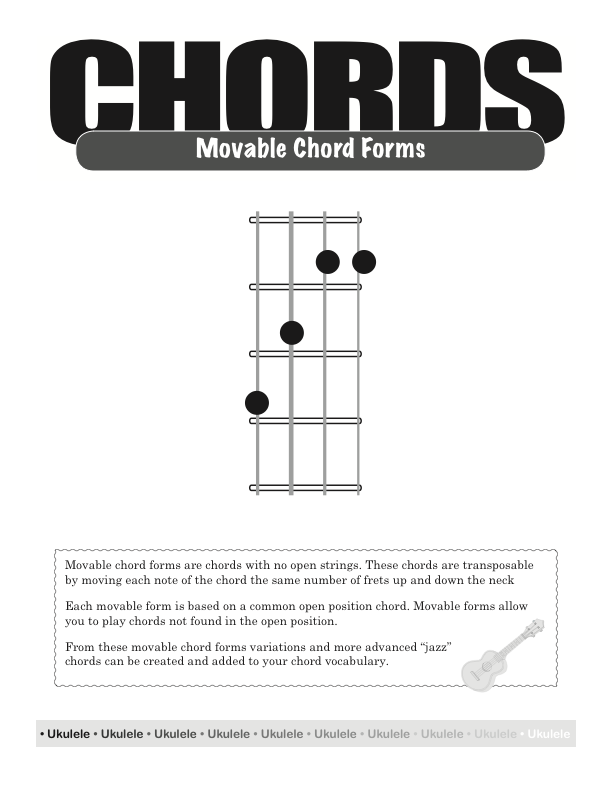
The "C/Db Movable Form Ukulele Chords", based on the open position "C, Cm, and C7" chords allow you to transpose these to any key. The movable form chords are the next step after learning the core open position chords.
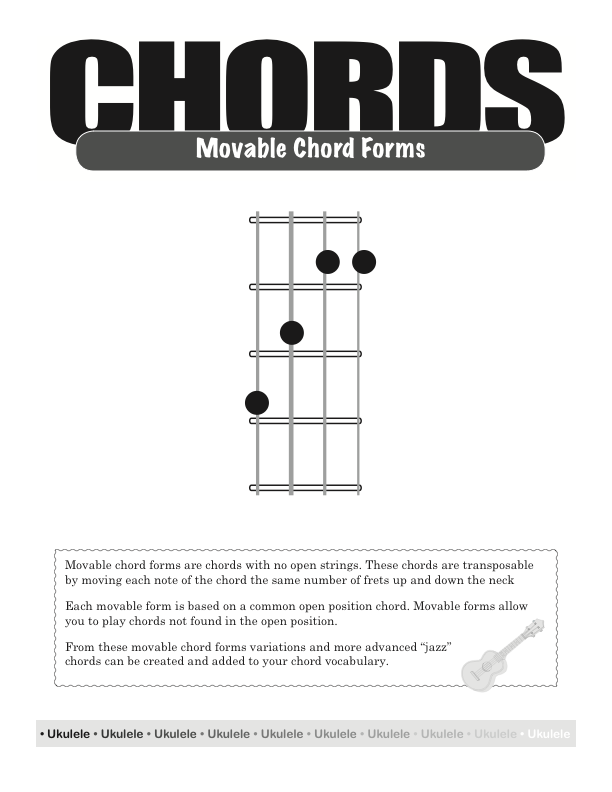
The "G/Ab Movable Form Ukulele Chords", based on the open position "G, Gm, and G7" chords allow you to transpose these to any key. The movable form chords are the next step after learning the core open position chords.
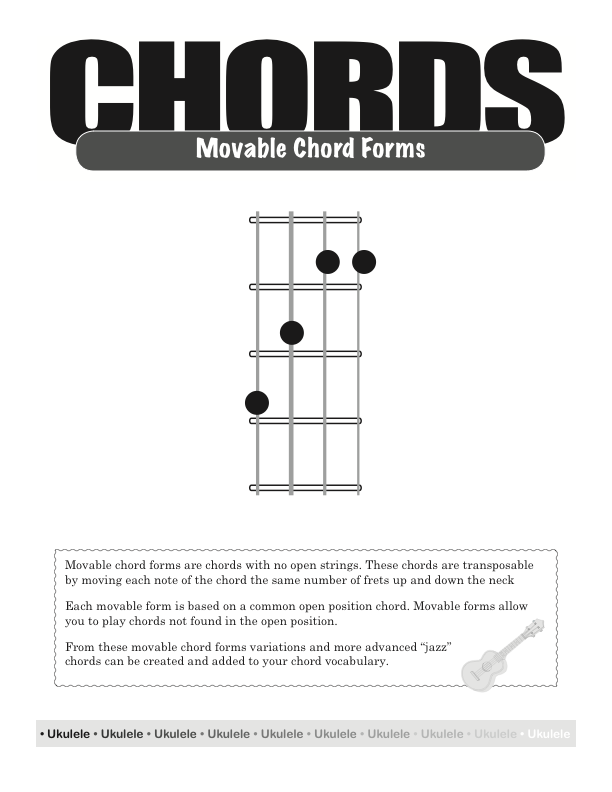
Based on the open position seventh chords: A7, C7, E7, and G7. These movable seventh forms allow you to transpose the open position seventh chords to any key.
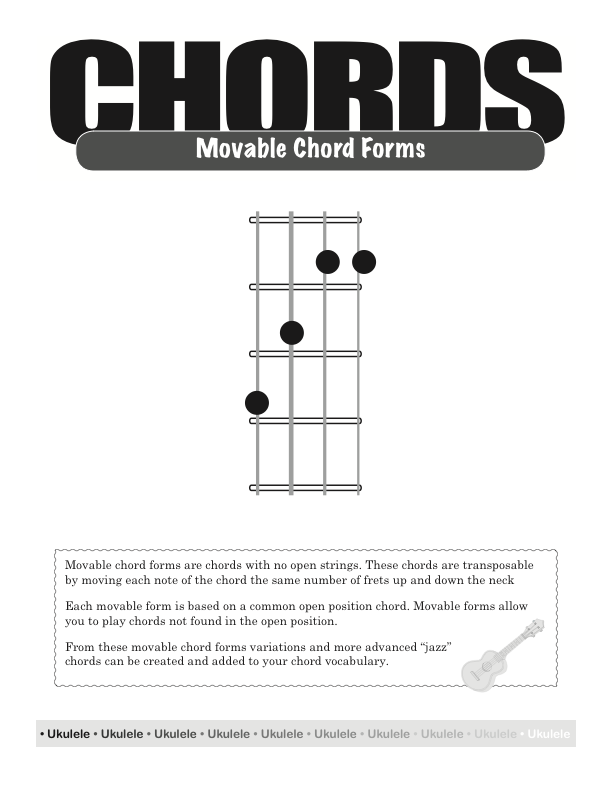
Power 5, sus and add movable form chords. These chords are common rock and contemporary chord forms.
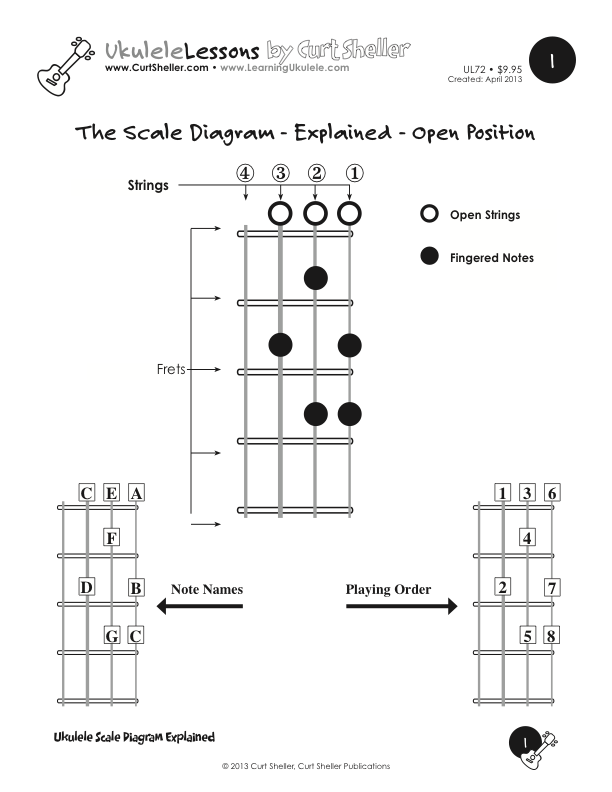
The "Ukulele Scale Diagram" is an alternate notation and visual why of showing a scale using a grid pattern representing the strings and frets of the Ukulele Fingerboard.

The Big Six Core Chords - Level I: "F7" is created from the "1 3 5 b7" of the major scale, based on the root of the chord. For "F7" the chord tones are: F A C Eb. This lesson introduces the four "F7" voicings on the string set, strings 1, 2. 3, and 4. The Chords are shown for C Tuning, Low and High G.
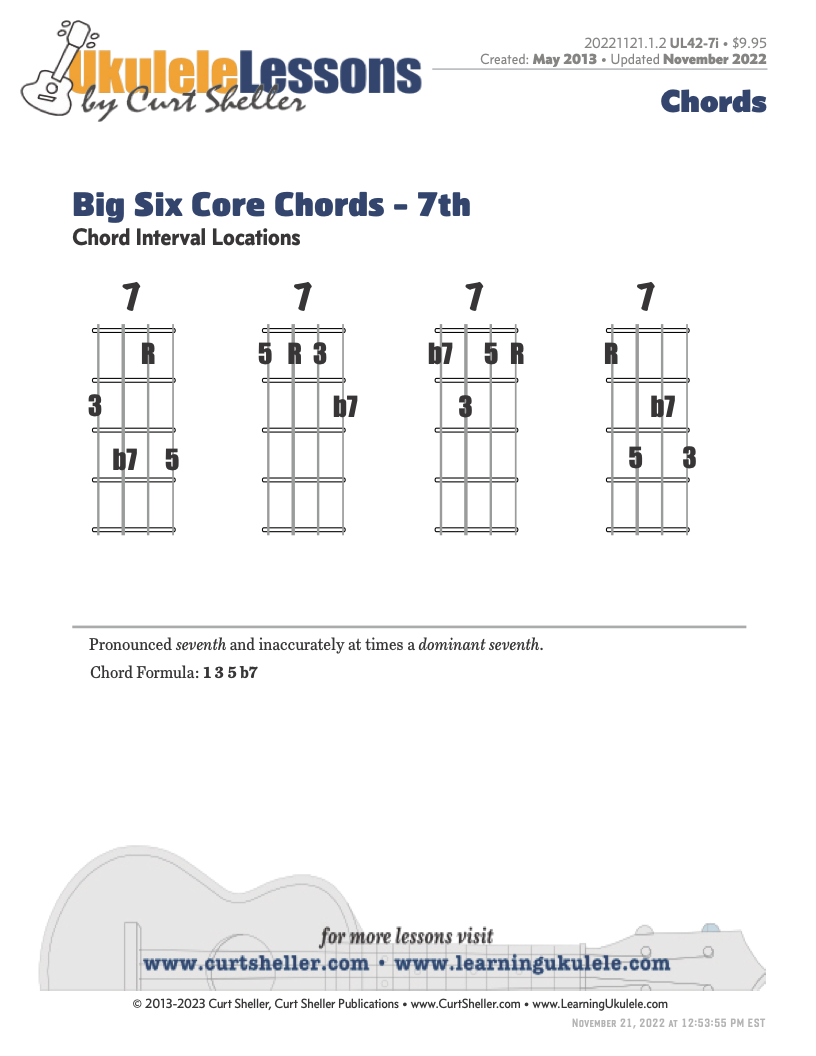
Learning the locations of the chord tones - the actual names of the "F7" chords, the foundation chord for our Big Six Core Chords.
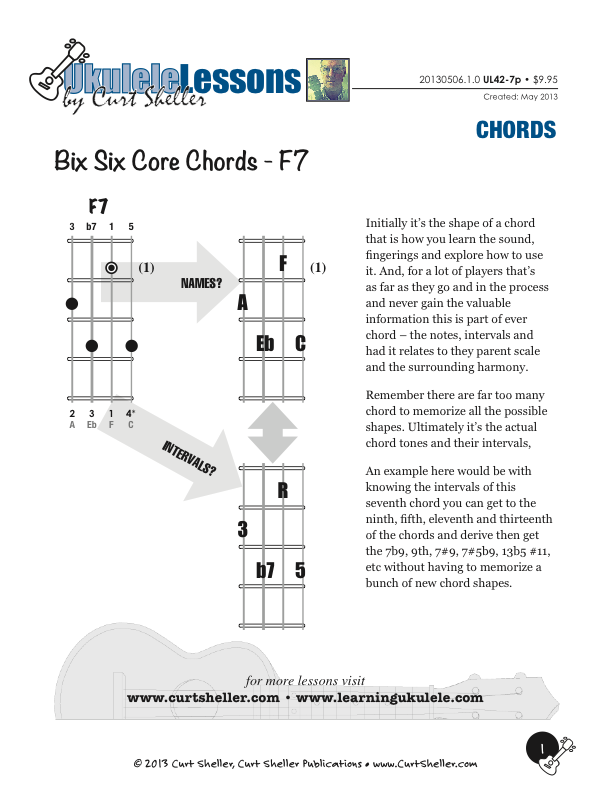
The Big Six Core Chords - "F7", four voicings. From shape to chord tones to intervals and back again. Really, learning what a chord is made of.
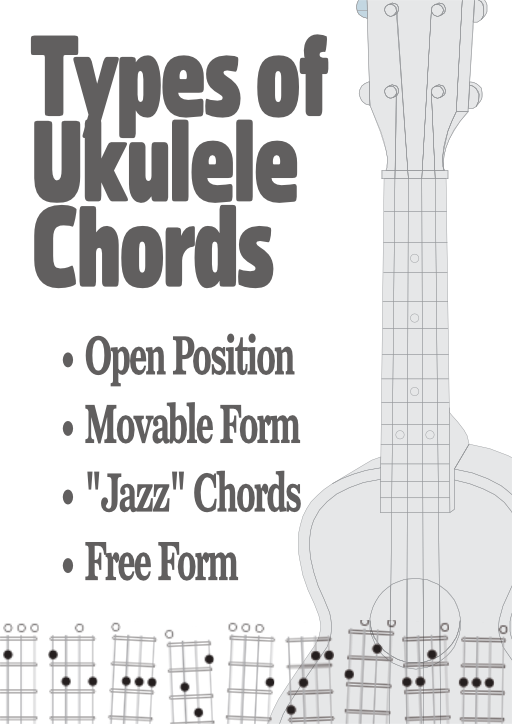
Naturally, for Ukuleles, all chords need to be voiced using only the four strings available. You would think that this is limiting, when in actuality it's quite liberating when you learn the makeup of chords. Chords can be categorized into four categories: “Open Position Chords”, “Movable Form Chords”, “4-part - a.k.a. Jazz Chords”, and “Free Form Chords.”
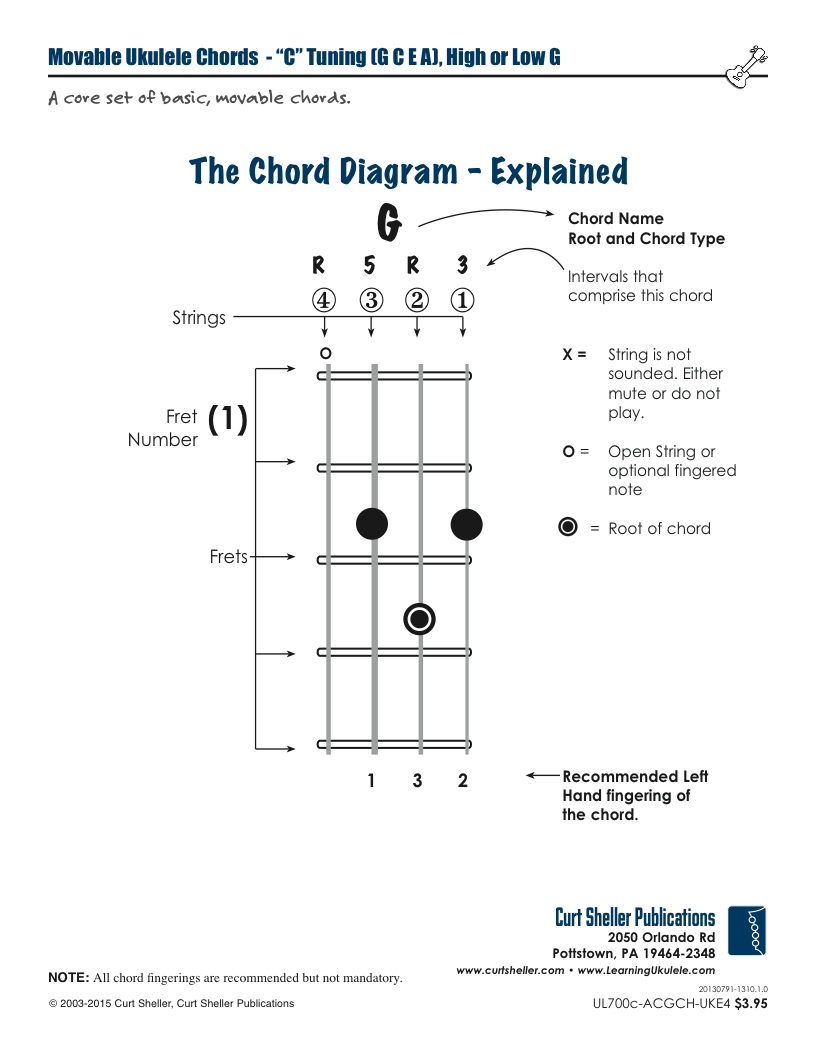
These chords are movable chord forms based on core 4-part seventh chords and triads with duplicated and/or omitted notes.
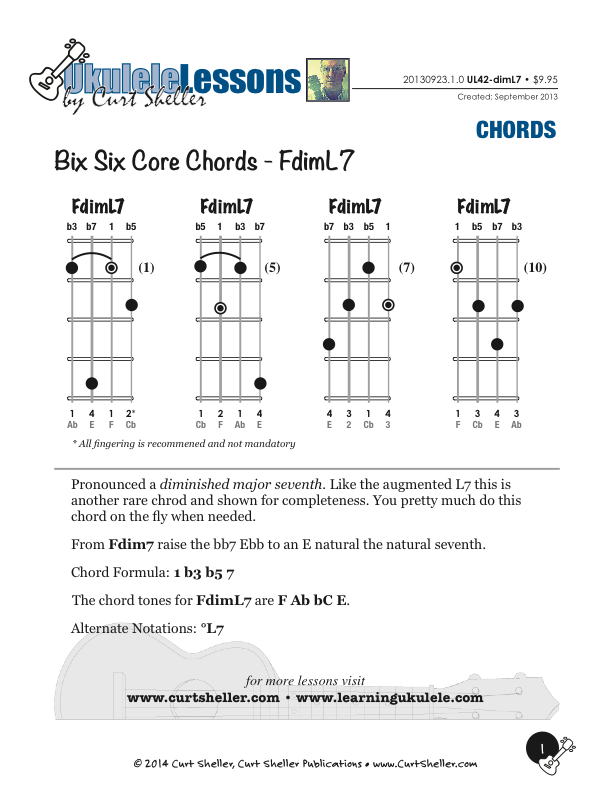
A rare chord, a diminished triad with a major seventh. Used the support the melody when the melody is the major seventh.
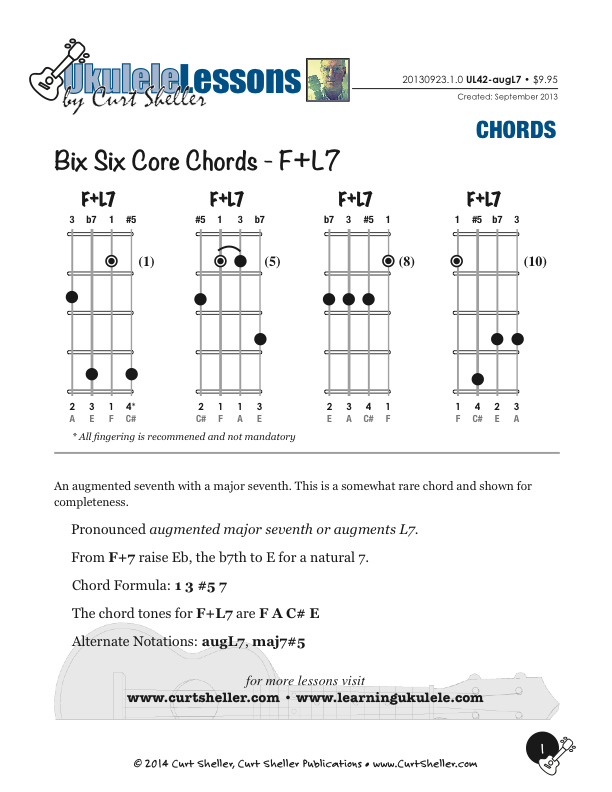
A rare chord, an augmented triad with a major seventh. Used the support the melody when the melody is the major seventh.
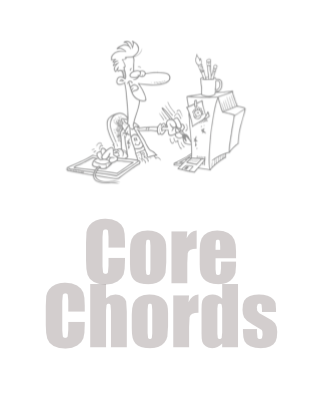
The next series of chords that build on the Bix Six Core Chords and form the foundation for ALL your jazz chords include: Major Sixth ( 6 ), Minor Sixth ( m6 ) and Minor-Major Seventh ( mL7 ).
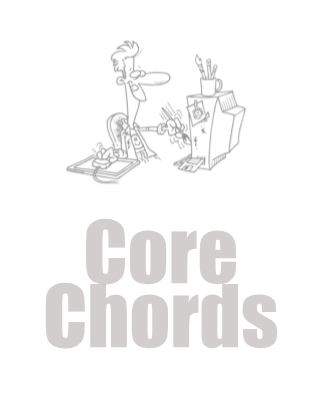
The next series of chords that build on the Bix Six Core Chords and form the foundation for ALL your jazz chords include: Diminished Major Seventh ( dimL7 ) and Augmented Major Seventh ( augL7 ). These chords are rare and used to support a major seventh melody.

The remaining chords for The Big Six, Level I Core Chords. The Big Six chords include: Seventh 7, Major Seventh maj7, Minor Seventh m7, Half Diminished Seventh or Minor Seven Flat Five diminished 7 m7b5, Diminished Seventh o7 and Augmented Seventh +7. These six chords form a core set of chords.

The basic first chords most players learn. There are the chords in the first, second, third, and fourth frets of the ukulele and include at least one open string.

Sometimes called barre chords, these chords venture beyond the third fret.

A "Triad" is a three note chord. In traditional chord theory there are four traditional triad chord types: major, minor, diminished and augmented. And four contemporary triad chord types: sus2, sus4, add2 and add9. Triads can be used harmonically, as chords and melodically, as single notes. Triads are a great way to get started with creating melodic solos and improvising.

Core Chords is a series of lessons for building your 4-part chords. These chords commonly called jazz chords, are really just 4-part chords used in a wide range of musical styles. Beyond basic open position chords, basic movable form chords and a core set of 4-part chords. There are just too many chords shapes too memorize. Learning the principles of how chords are constructed and the ukulele fingerboard are the way to go. Then you can create more advanced chords like 9#11, 7#5-9, 13b5, 7+9 on the fly as needed.

"Core Chords" are a concept that I typically apply to 4-part chords and your more contemporary modern chords. This where a solid foundation of a core set of chords really help in learning the massive amount of chords that are required for play contemporary music or jazz on ukulele or guitar. Not such a task on ukulele with on one four string set of strings to build your 4-part chords vs. the theoretically possible 15 sets available for guitar.
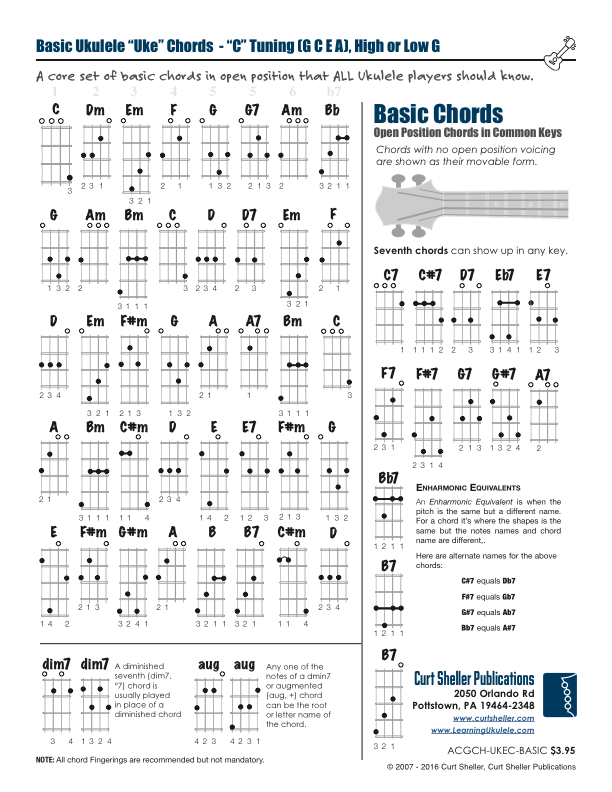
A core set of basic ukulele chords that ALL Ukulele players should know in the five common keys of C, G, D, A and E. With the possible seventh chords for the same common keys. The chart is organized in common keys and covers basic chords in these keys.
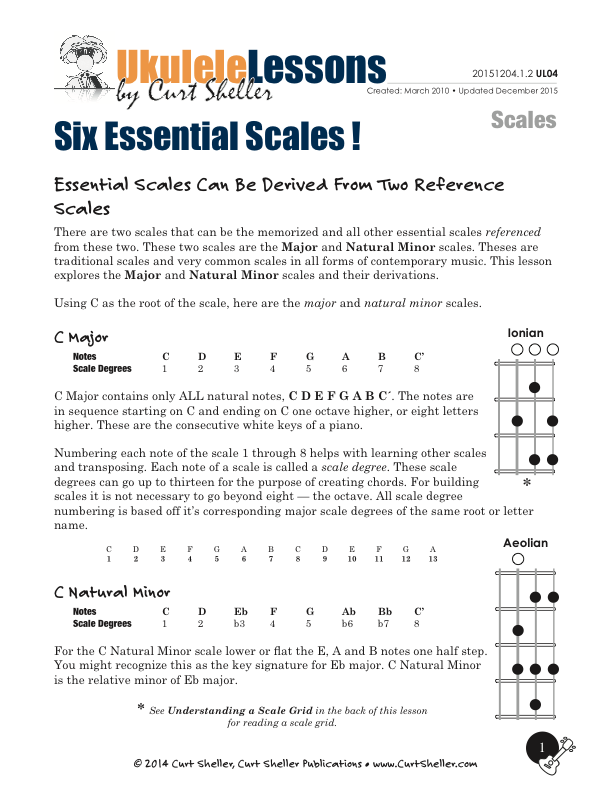
The six essential scales are: Blues Major Pentatonic Mixolydian Dorian Aeolian and Ionian From the six essential scales, you can get through a wide variety of traditional and contemporary music. A scale is simply a collection of pitches or notes, not really a "this is a Jazz scale", "this is a Blues" or "this is a Rock scale". It's how a scale is used that really matters not its name.
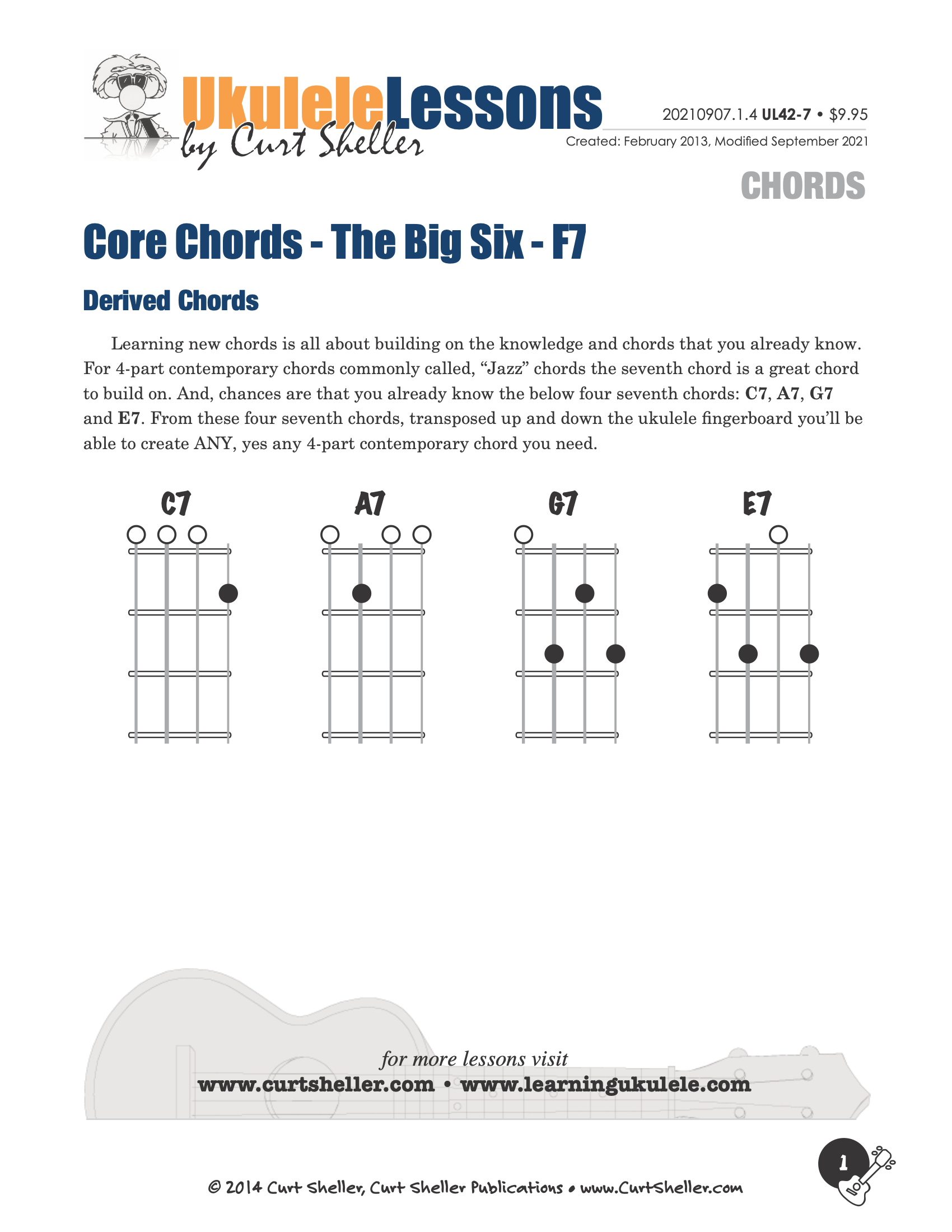
The Big Six Core Chords is a series of lessons for building your core, essential 4-part chords. These chords commonly called jazz chords, are really just 4-part chords used in a wide range of musical styles. These chords include: Seventh , Major Seventh, Minor Seventh, Half Diminished Seventh or Minor Seven Flat Five, Diminished Seventh, and Augmented Seventh. These six chords form a core set of chords.
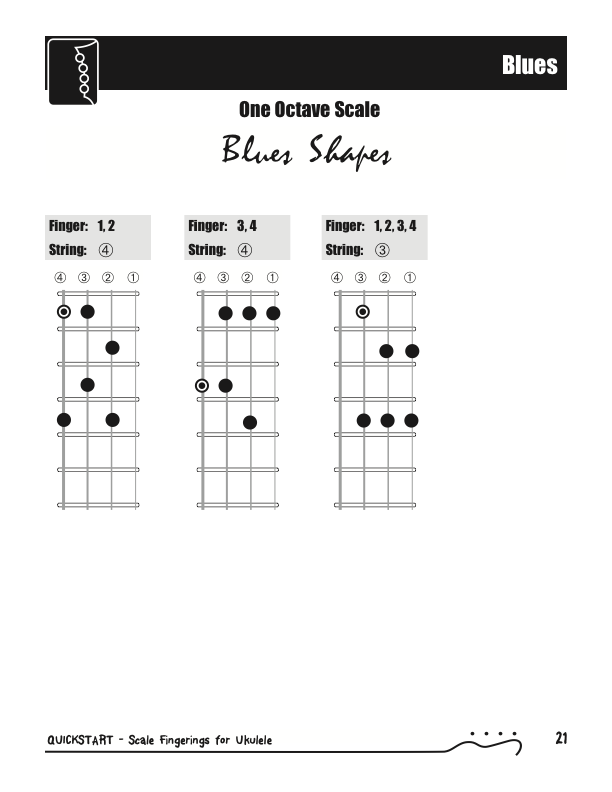
QuickStart scale shapes summary for Blues/Minor Pentatonic, one of the six essential scales that every ukulele player should know.
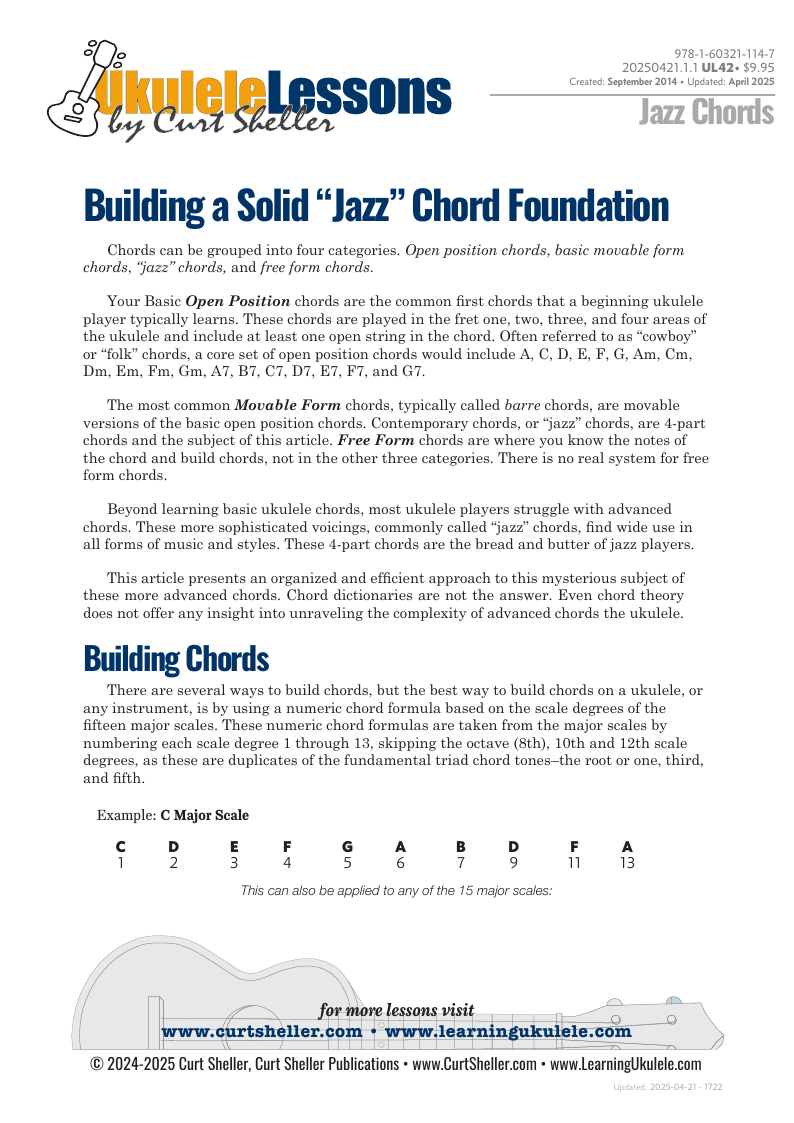
Commonly called "Jazz Chords", these more sophisticated, contemporary chord voicings find their way into a wide variety of music forms and styles. This lesson is the first on the series that builds your core foundation for these chords.
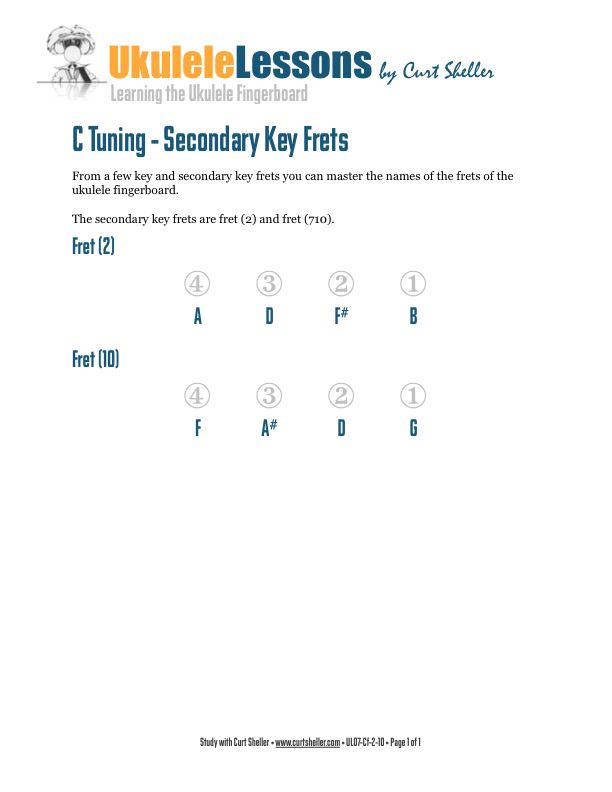
After learning the key frets, the secondary key frets start to fill in the remaining fingerboard of the ukulele.

Happy New Year! What better way to start the new year off than by learning a new ukulele chord every day of the year? The chord for January 1st is C. Originally started in 2013, this is a great way to review and learn your chords.

The Big Six chords include: Seventh 7, Major Seventh, Minor Seventh, Half Diminished Seventh or Minor Seven Flat Five diminished 7 , Diminished Seventh and Augmented Seventh. These six chords form a core set of chords.

It's unfortunate that there' s no oversight or organization that regulates private music teachers. This is especially true for private guitar and ukulele teachers. Anyone can hang a shingle out advertising private lessons or put content online. So finding a good teacher can be a problem. Here are a few questions you can ask prospective teachers and generally speaking what their answers should be. I'll also input my perspective which should give some info on accurately evaluating a prospective teacher or online content.

Learn a new Ukulele chord every day of the year. The chord for January 3rd is G. G is a primary chord in the common keys of G, C, and D.

The Big Six Core Chords, Level I - Fmaj7, four voicings. Fmaj7 is a 1 3 5 7 of the major scale, based on the root of the chord. These are the four Fmaj7 chord voicings that will be used for deriving other major seventh derived chords. There are far too many chord shapes to memorize thousands of shapes.

Chuck Anderson wrote a great blog entry about the three words Play, Practice and Theory that send the wrong message to players and the general public.

Beyond basic open position chords, basic movable form chords and a core set of 4-part chords. There are just too many chords shapes too memorize. Learning the principles of how chords are constructed and the ukulele fingerboard are the way to go. Then you can create more advanced chords like 9#11, 7#5-9, 13b5, 7+9 on the fly as needed.



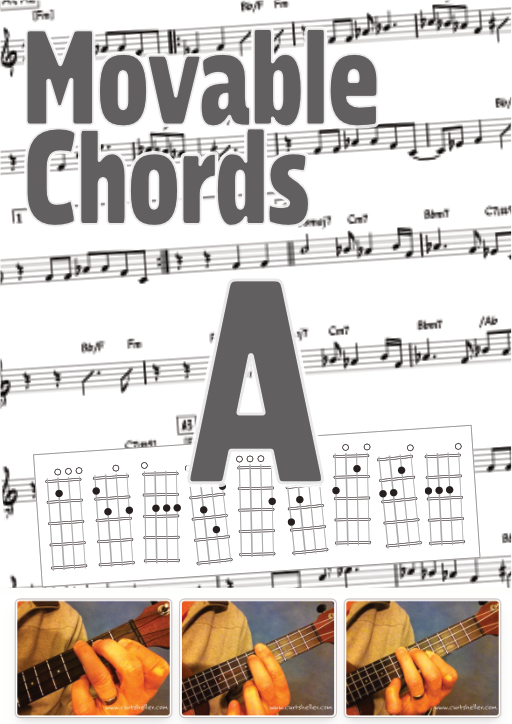
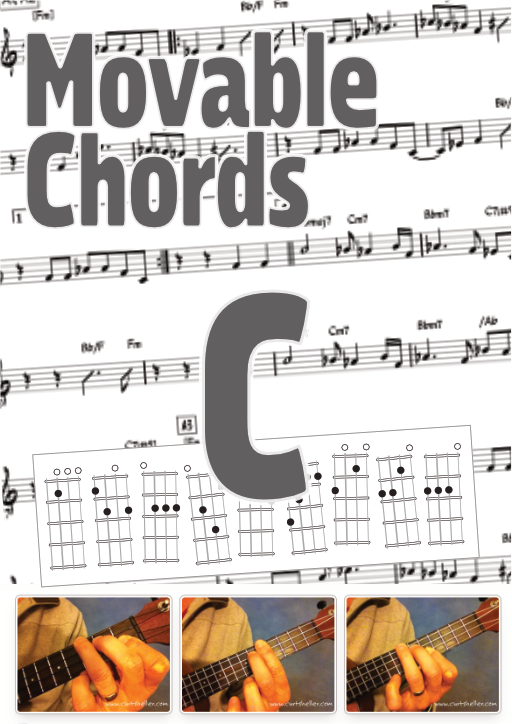
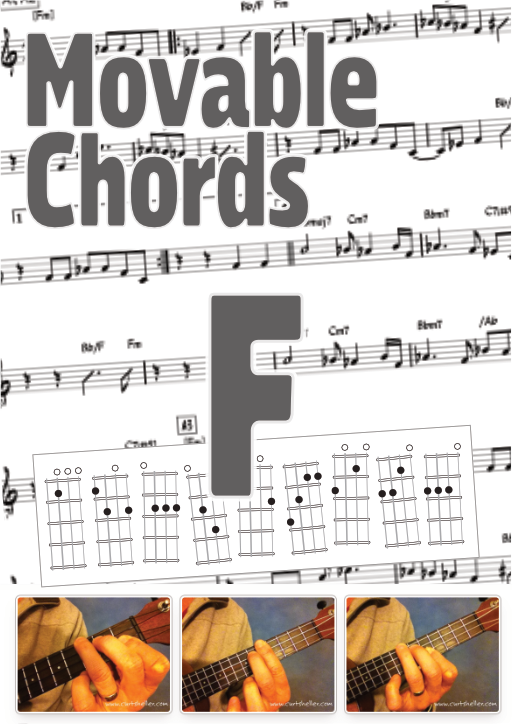
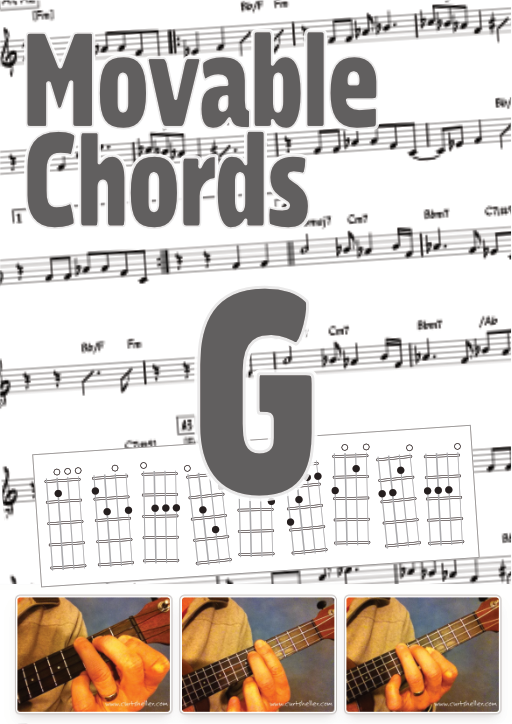
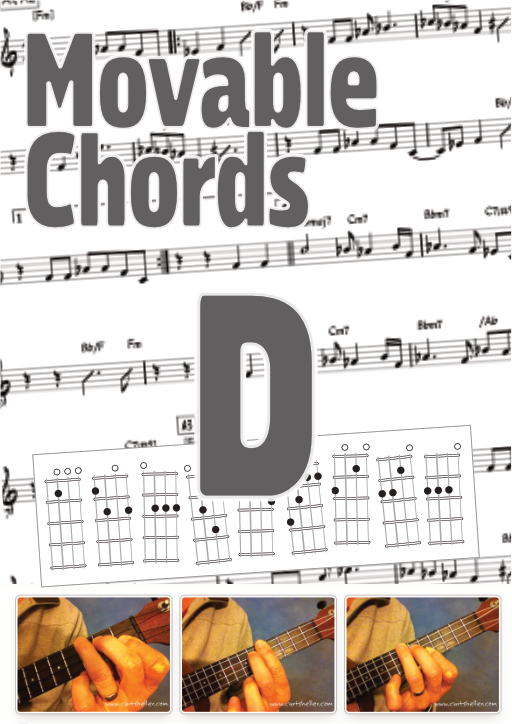






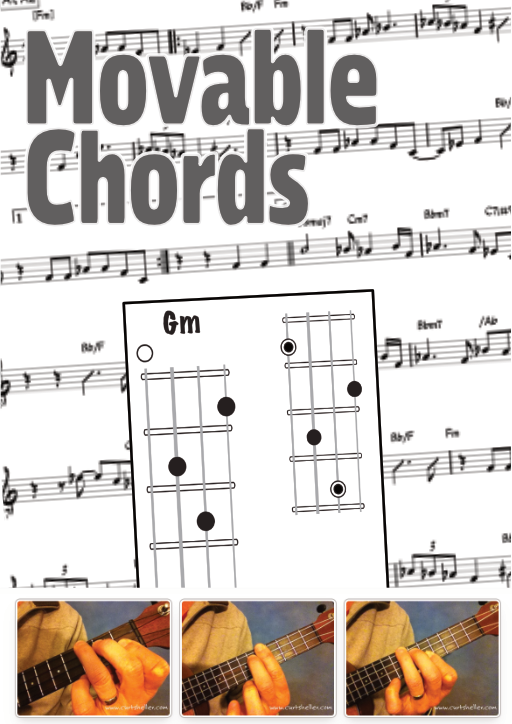





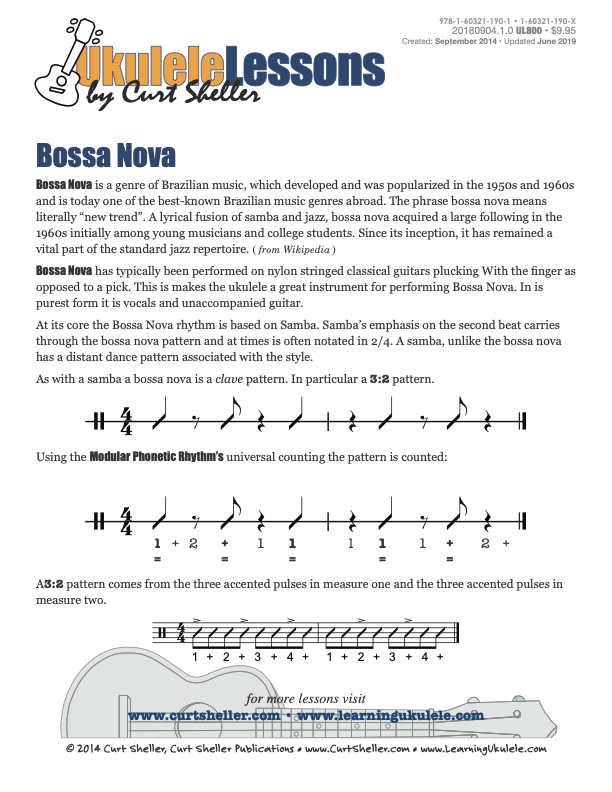

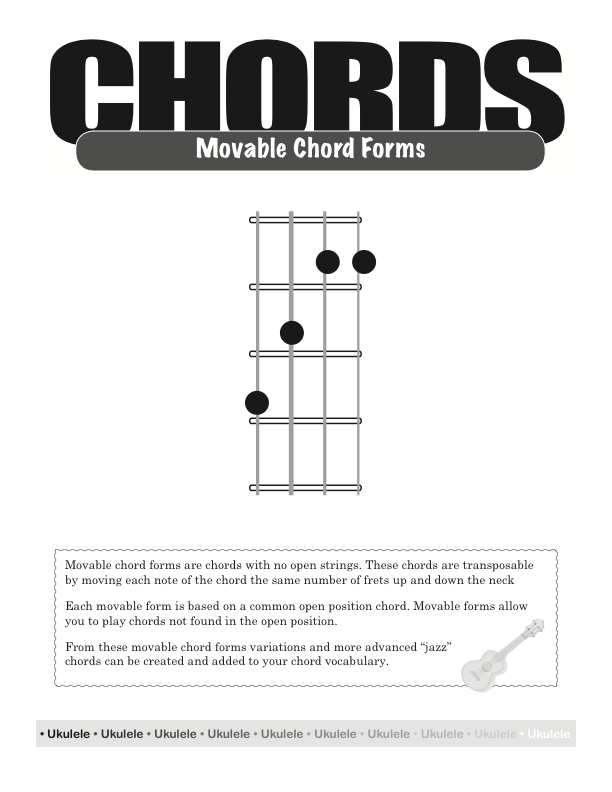
.jpg)